
Take a walk through the most ancient Kremlin in Russia
The Novgorod Kremlin, which is also called ‘Detinets’, is located on the left bank of the Volkhov River. The first fortified settlement was set here during the reign of prince Vladimir Yaroslavich, the son of Yaroslav the Wise. During these times, all the state, public and religious life of Novgorod was concentrated here. It was the place where people kept chronicles and copied the texts of books. The Novgorod Kremlin, the most ancient one in Russia, was founded here in the 15th century.
St. Sophia Cathedral (11th century), The Millennium Of Russia Monument, Episcopal Chamber (15th century) and the main exhibition of The State Novgorod Museum-reservation located in a public office building of the 18th century are all situated in the Novgorod Kremlin. The exhibition will tell you about the whole Novgorod history from ancient times to the present day. There are also restoration workshops, a children’s center, a library and a philharmonic inside the Kremlin walls.

Send a letter with the State Novgorod Museum-reservation stamp
While visiting the main building of the Novgorod Kremlin museum, you’ll see a small bureau near the souvenir area. Two more bureaus like that can be found in the Fine Arts Museum and the Museum information centre. This is the Museum Post, the joint project of the State Novgorod Museum-reservation and Russian Post.

The tradition to exchange letters (at that time written on birch bark sheets) dates back to the 11th century so it’s hardly surprising that such a project appeared here. The bureaus are desks and mailboxes at the same time, so you can send your friends a postcard with a view of Novgorod right from the museum.

Find the famous Russian poet Alexander Pushkin among the figures of The Millennium Of Russia Monument
In 1862, 1000 years after the Varangians were called to Russia, a monument dedicated to this event was launched in Novgorod. To tell the story of Russia’s one thousand years, the sculptor used 129 bronze figures: from state and military leaders to artists and poets.
One of figures portrays Afanasy Ordin-Nashchokin, a politician and reformer who was responsible for Russia’s diplomatic relations in the middle of the 17th century. He is believed to be the father of international and regular mail in Russia. He was also the person who came up with the idea of the first Russian Post official emblem — a post horn and a double-headed eagle.
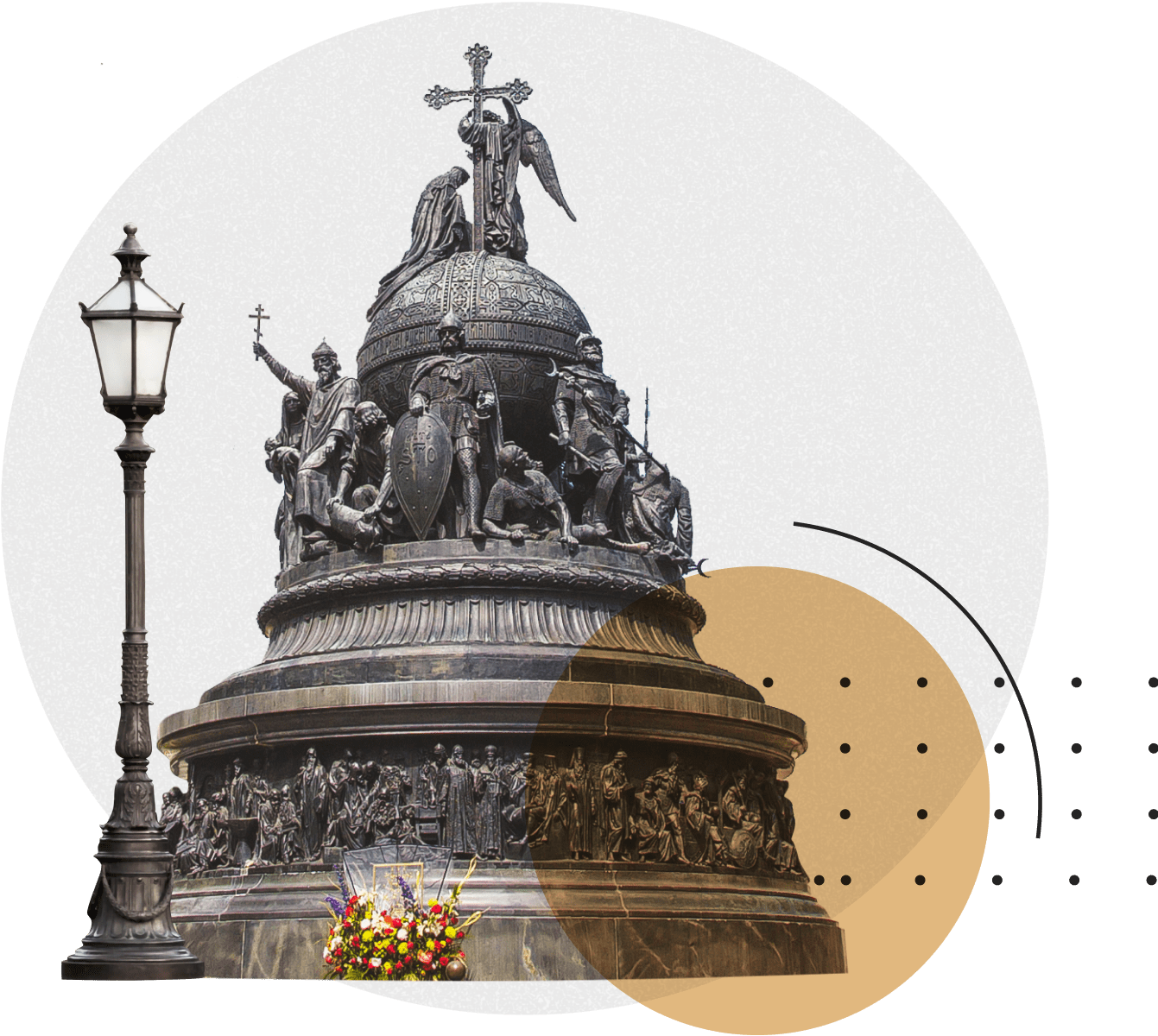
Cross the Msta River over the first arch bridge in Russia
The steel bridge in Borovichi town that connects two banks of the Msta river was built at the beginning of the 20th century. The project of the bridge was created by Nikolay Belelyubsky, engineer and professor of St. Petersburg State Transport University. This is the first arch bridge in Russia.
In 1995, it was included in the national cultural heritage register. More than 100 bridges across Russia were developed by Belelyubsky, but only this one is named after him.

Cast a virtual bell
When in the Novgorod region, you’ll definitely hear bells ring and learn about the Novgorod Veche Bell. During the siege of the city, tsar Ivan III ordered to remove this bell from the bell tower and send it to Moscow. Legend says that the bell didn’t accept his fate, fell to the ground near the border of the Novgorod region and broke to pieces against the stones.
In the biggest Museum Bell Centre in Russia located in the Valday town, you can see bells from across the world and learn why Novgorod bells are unique. The museum’s collection represents bells from different countries and ages, some of them dating back to the 3rd century BC. You’ll learn about the history of casting and modern bell-making technologies and also play games on a touch table. For example, harness virtual ‘troika’ (three) horses with bells or cast a virtual bell.
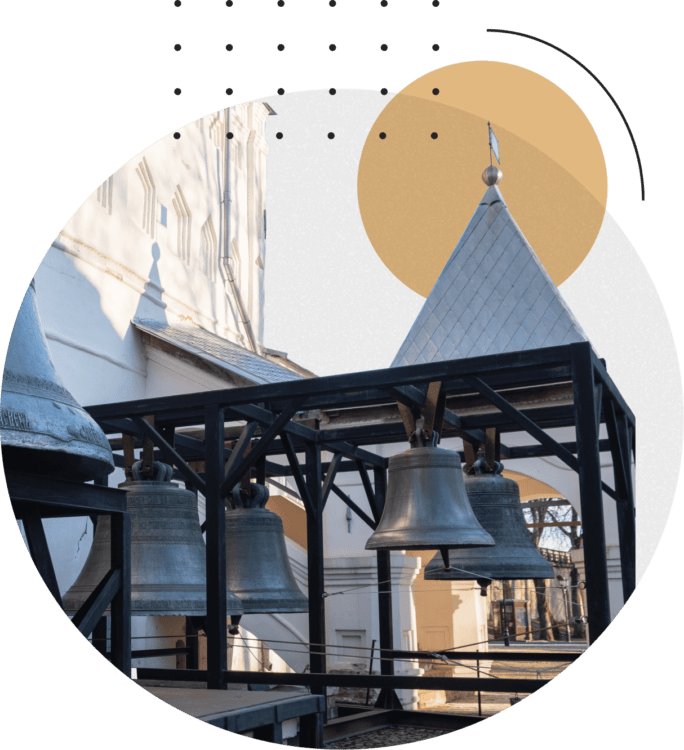
Spot the pigeon on the cross of St. Sophia Cathedral
St. Sophia Cathedral was built in Novrogod between 1045 and 1050 by Kievan and Byzantine masters. It was conceived as the main cathedral of the city, and during its first years it was the only stone building in Novgorod. So where does the pigeon on the cross of the cathedral’s biggest dome come from?
Legend says that while tsar Ivan the Terrible and his Oprichniki were cruelly killing peaceful city folk in 1570, a pigeon suddenly sat down to the cross of the city’s main cathedral. It looked down, saw the massacre, and was literally petrified with horror. Since then the pigeon has been considered the defender of the city. People believe that as soon as the pigeon flies away from the cross, Novgorod will come to an end.
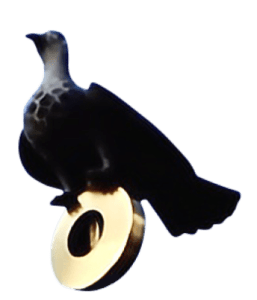
Visit a monastery, that was founded by Patriarch Nikon
The Valday Iver Monastery is situated on the island in the middle of the Valday lake. It is considered to be one of the most important and picturesque orthodox shrines.
The monastery was founded in 1653 by the initiative of Nikon who had just been elected Patriarch. Nikon wanted the monastery to look like the Iviron Monastery on Mount Athos, including the architectural style and monk’s clothes. Legend says that Nikon saw the spot for the monastery in a dream.
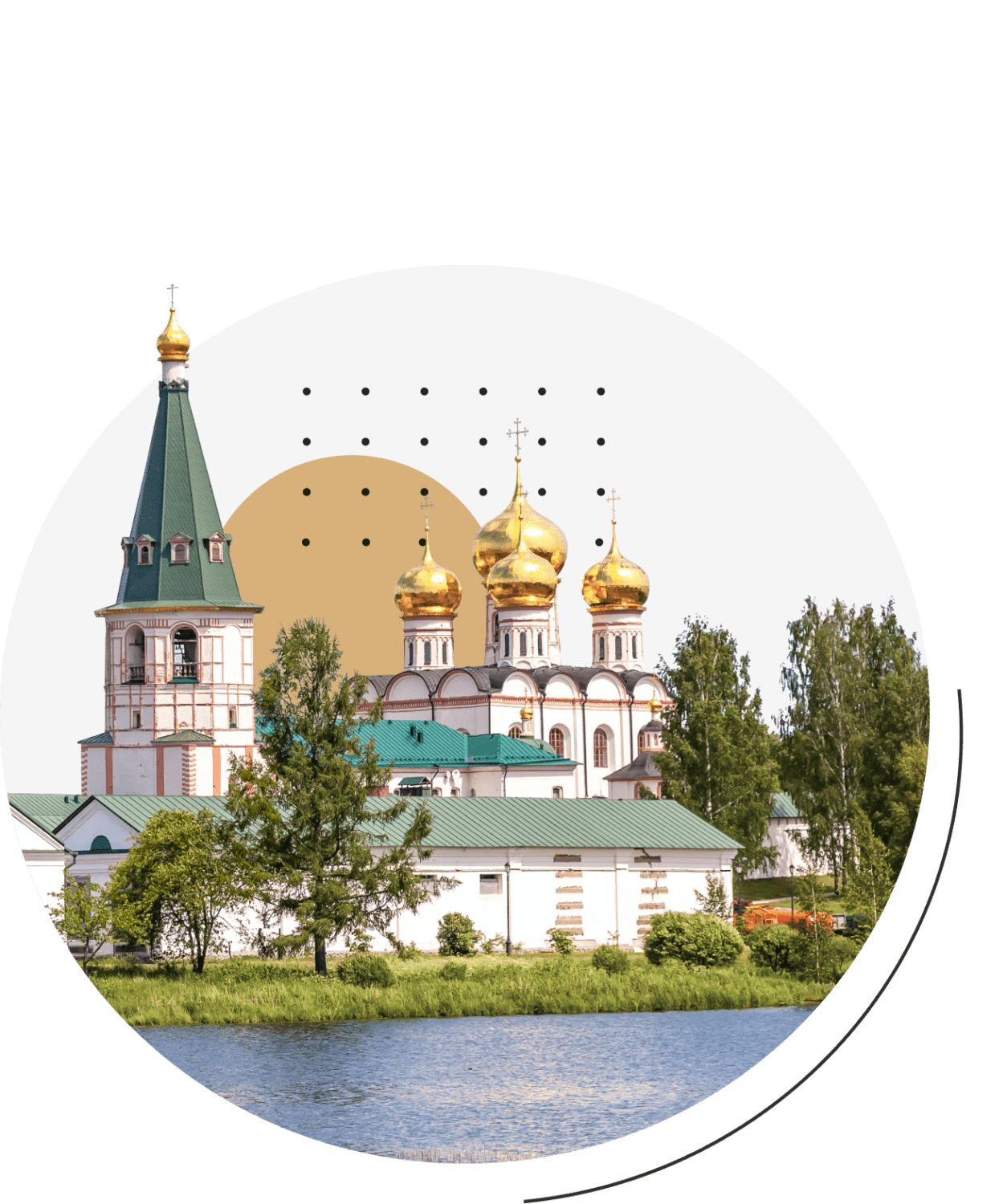
Check out Fyodor Dostoevsky’s country house
Fyodor Dostoevsky, a famous Russian writer, first visited Staraya Russa town in 1872 during a summer trip with his family. They liked it so much that the next year they rented a house near the Pererytitsa River’s embankment and spent every summer here ever since.
Dostoevsky loved this house, called it ‘his nest’ and considered it the perfect place to work and to be alone. In Staraya Russa he wrote his novels ‘The Adolescent’, ‘The Brothers Karamazov’ and ‘Demons’. Today, this place is a museum where you can explore what Dostoevsky’s house looked like and see his family’s personal belongings, photos and letters.

Visit an authentic Russian ‘izba’ (wooden house)
If you want to really enjoy the atmosphere of the old Novgorod, you should come to the Vitoslavlitsy Museum of folk wooden architecture that is located on the Myachino lake not far away from Veliky Novgorod. In this open-air museum you’ll see the best examples of Russian wooden architecture, including authentic old ‘izbas’ (wooden houses), rural chapels and churches.
During the year, the museum hosts fairs of crafts and folklore, christmastides, and even an international bell ringing festival.
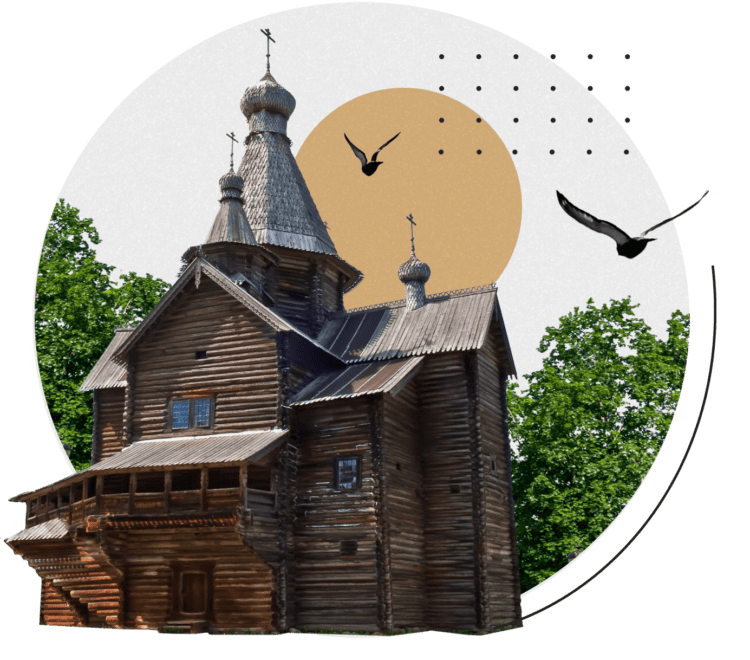
Learn what Brick Gothic looks like
The Episcopal Chamber of the Novgorod Kremlin is the only non-religious German Gothic building of the 15th century preserved in Russia. You can have a good look at the facets of the gothic cross-domed vaults inside the chamber. This is why this building is also called ‘Faceted Chamber’ or ‘Chamber of Facets’.
The chamber was part of Vladychny Dvor, the place where all important city events took place: court hearings, gatherings of the Council of Lords of the Novgorod Republic, ambassador’s receptions and feasts. The seals of the city’s lords were kept here. The decree of tsar Ivan III on merging the Novgorod Republic with the Moscow State was first announced in 1478 in Episcopal Chamber. This is when the name of the new state, Russia, was first pronounced.
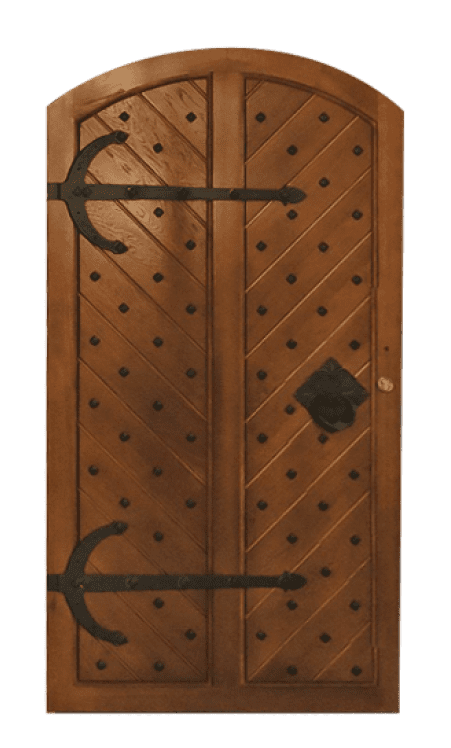
See the murals by Theophanes the Greek
The Byzantine Empire had a huge impact on the development of the Russian culture. Many works of art and architecture in ancient Russia were created by Byzantine artists and masters. Theophanes the Greek was one of them. He was born in Byzantine and created icons and murals in Constantinople and Caffa (modern Feodosia). After that he moved to Novgorod where he was commissioned to paint the walls of the Church of the Transfiguration of the Savior on Ilyina Street. You can enjoy his unique and expressive style if you look at the murals inside the dome of the church and the Trinity side chapel.
The most recognizable and the only monumental work of Theophanes the Greek that is preserved today is the chest-high portrait of the Savior the Almighty in the dome of the Church of the Transfiguration of the Savior.
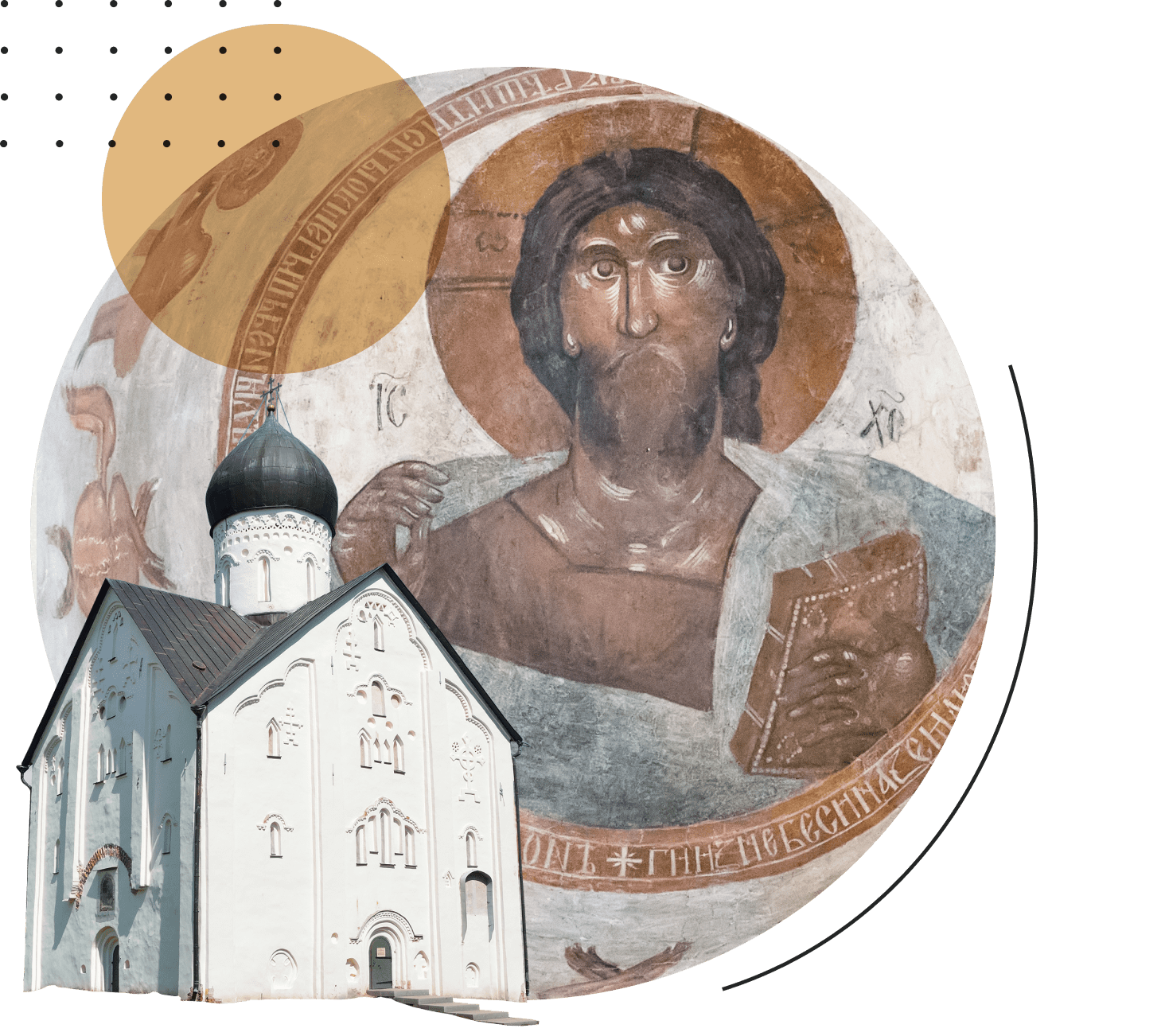
Take a photo with an ancient Novgorod citizen who is learning how to read and write
In 1951, a letter written on birch bark dating back to the 14–15th centuries was found in Veliky Novgorod. Many decades later, in 2019, a sculpture designed by Novgorod artist and sculptor Sergey Gaev appeared on this exact site.
The sculpture portrays an 8–year old boy sitting on a stool and holding a piece of birch bark. At this age children in Novgorod started to learn how to read and write. During archaeological excavations in Novgorod, scientists often found ancient handwriting practice books and children’s drawings on birch bark sheets.
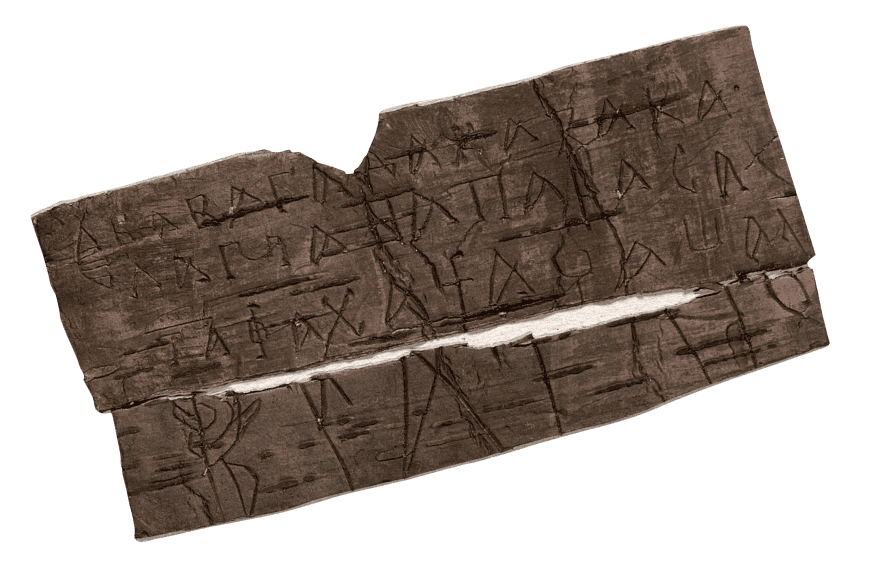
Feel like an ancient viking or prince Rurik’s guest
Novgorod is one of the waypoints of the famous trade route from the Varangians to the Greeks. The route passed through the Volkhov river. In the 9–10th centuries there was a fortified settlement of the Viking Age here.
Some scientists believe that Novgorod is named after this area which was called ‘Stary Gorod’ (‘Old City’) at that time. Some historians and archeologists consider this place to be the residence of Prince Rurik who was asked to rule the city in 862. That’s why this ancient settlement is called ‘Rurikovo Gorodische’ (‘Ruruk’s Old City’).
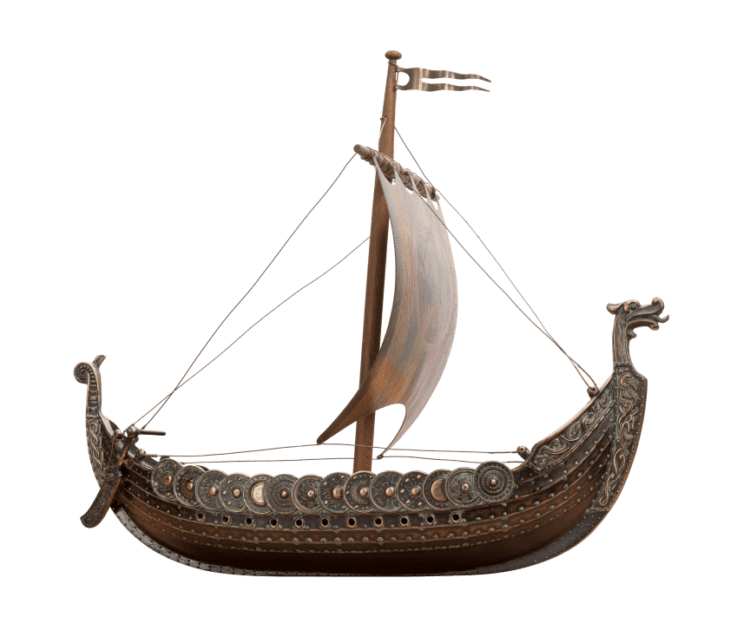
Learn more about the Soviet modernist architecture
On the bank of the Volkhov river near the Novgorod Kremlin, there is an incredible building that looks like a spaceship and contrasts strongly with the ancient buildings of the city.
This is the Fyodor Dostoevsky Theater of Dramatic Art that was built in 1987. It is one of the most striking examples of the Soviet modernist architecture. The theater was built for 10 years according to the project of architect Vladimir Somov.
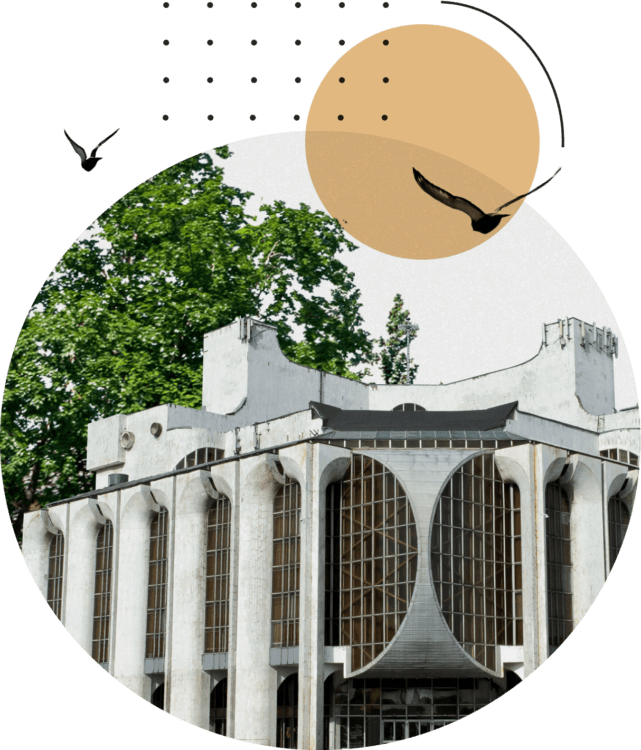
See what an everyday life of Old Believers looks like
The Krestsy town in the Novgorod region has always been considered to be the center of the Novgorod Old Belief community, and it still is. Before the Soviet revolution there were three Old Believers churches here.
The Lyakova village, which is located not far from the town, used to be inhabited completely by Old Believers. You can learn more about their lifestyle in the local interactive museum. You’ll be introduced to Old Believers’ traditional crafts and ceremonies, drink tea with healing herbs and learn how to chop wood and use an old spinning wheel.

Buy a traditional embroidered tablecloth
A unique embroidery style that is now famous all over the world was born in the Staroye Rakhino village in the Novgorod province. By the middle of the 19th century, it had become a folk craft. Since then, linen tablecloths, towels and clothing items decorated with unusual ornaments have been popular not only among the locals, but also travellers.
In 1929, the first cooperative partnership of embroidery masters was created in Kresttsy. Later it turned into a factory that still operates today. The factory has a museum where embroidery traditions are preserved and new ornaments and technologies are created.

Find yourself in the Middle Ages
In the Middle Ages, Staraya Russa town could be called ‘the salt cellar of Russia’. That’s because salt making was the main trade here up to the 19th century. A few years ago, the old craft was brought back to life, and construction of salt works began. Later, an interactive museum was launched based on the results of archaeological findings.
This museum recreates a typical medieval manor of Staraya Russa of the 12th century with living rooms, a bathhouse, workshops, a livestock pen and traditional peasant household items. In this museum, you can also buy salt which is made in the same way as 1000 years ago.
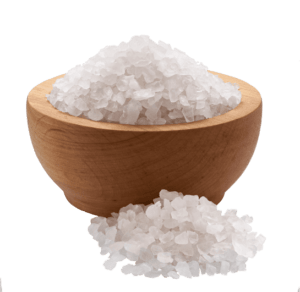
See the place where Suvorov started his Italian campaign
Alexander Suvorov’s manor in the Konchanskoe village, which has now become the museum of the great commander, was originally the place of his exile. Suvovor openly disagreed with the reform of Russian’s army based on the Prussian model, and Emperor Paul the First didn’t appreciate such behaviour. He first fired Suvorov and then sent him away to his family estate.
However, the exile lasted for only two years. The great commander started the military campaign straight from his house in the Konchanskoe. During this legendary expedition, he crossed the Alps and defeated the French army.
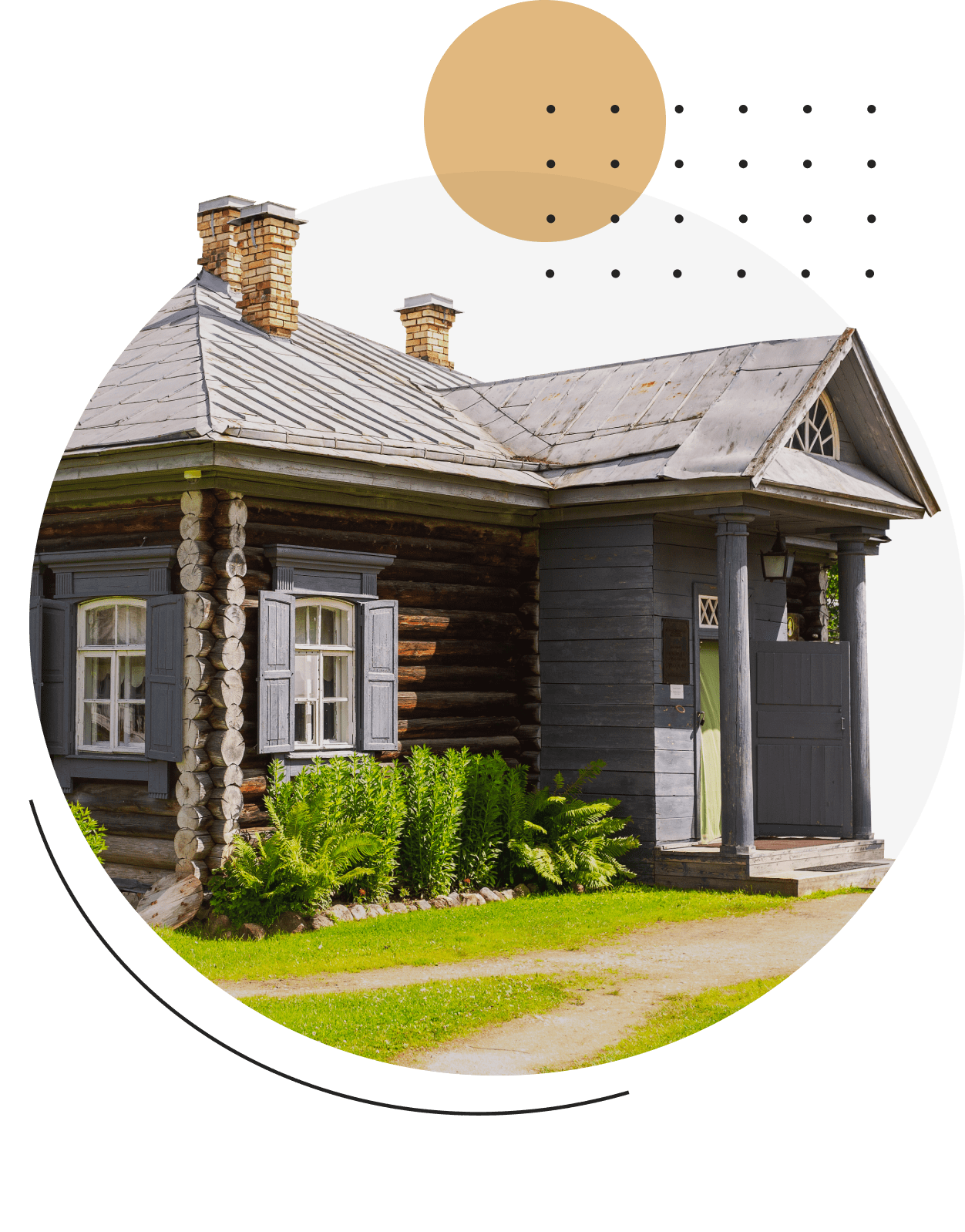
Become a real hiker
If you dream of having a hike in the Novgorod region, but at the same time you are afraid that a tourist’s life may be too hard, you should try the Big Valday trail. This is a five-day 59-kilometer walking route. Its central part goes right through the Valday National Park’s territory.
You won’t have to cope with difficulties and inconveniences of camping life here. The route is marked with signs, and there are camping sites where you can find everything you need for an overnight stay from shelters and places for a fire to toilets. The trail finishes at the Dunayevshchina village where you can take a bus back to Valday. To take the trail, you have to fill out a special form and register on the Ministry of Emergency Situations of the Russian Federation website.
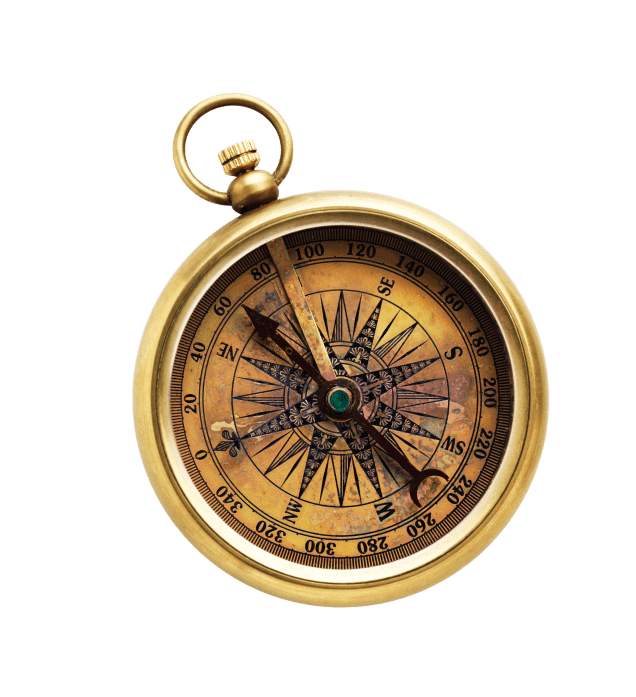
Russian Post has launched a limited series of products dedicated to the cultural heritage of the Novgorod region.
In autumn 2020, Russian Post announced an open contest to create the design for its limited series dedicated to Novgorod region. The project was supported by the Government of the Novgorod region, ‘Russ Novgorodskaya’ (Novgorod Russia) project, the State Novgorod Museum-reservation and Yandex.
Stamps and envelopes are traditionally used to spread information about historic dates and figures and famous landmarks. Now we can also use parcel boxes, packaging tape and postcards. The limited series products will travel around the world, introducing the most popular Russian attractions to six million Russian Post clients daily.
The participants were to create the design for the limited series featuring three iconic attractions of the Novgorod region, the Novgorod Kremlin, the Millennium Of Russia Monument and the Belelyubsky Bridge in Borovichi. Moscow designers and graduates of the Higher School of Economics’ Art and Design School Alena Akmatova and Svetlana Ilyushina won the contest. Their project was chosen via an open vote and by the expert jury.
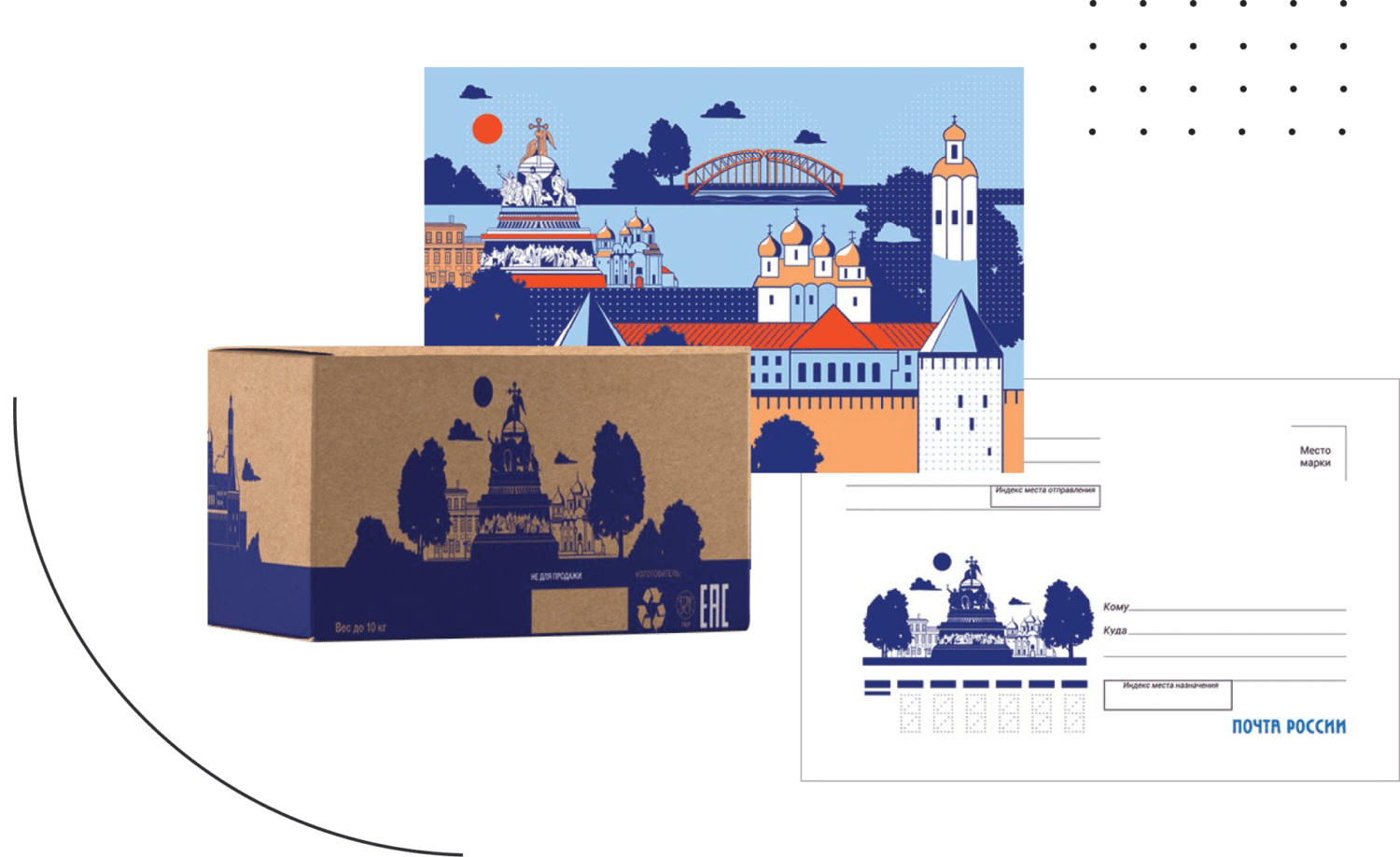
The Top 12 Things to Do in Novgorod, Russia
Russia as we think of it today has existed since the 16th century (excluding that pesky Soviet period) but the city of Novgorod has existed since the 9th century and was once one of Europe's largest cities!
Not surprisingly, a majority of activities in today's Novgorod relate to its long history of being more important, within and outside Russia, than it currently is. Here are the top 12 things to do in Veliky Novgorod, which translates to "Novgorod the Great" (and is not to be confused with Nizhny Novgorod, which sits over 600 miles away!).
Crash the Kremlin—No, Not That One!
Lite/Wikimedia Commons/ CC BY-SA 3.0
One thing you might not realize if you've never traveled to Russia is that (basically) every city has a Kremlin —the word roughly translates to "citadel." Novgorod's Kremlin, to be sure, is less ornate than the one you find in Moscow , but it also happens to be free. If you're visiting during a warm time of the year, you'll enjoy the Kremlin's proximity to the Volkhov River, which flows just outside its walls.
Rent a Bike—or Rollerblades
Though Novgorod's city center is relatively small and quite walkable, having a pair of wheels makes exploring the attractions yet to come on this list much faster (and, depending on the weather, more enjoyable as well). For a method of getting around that's as much of a throwback as some of Novgorod's ancient attractions, consider renting a pair of rollerblades.
Return to Where it All Began
User No 101/Wikimedia Commons/ CC BY-SA 3.0
Novgorod is older than Russia-proper, having been founded in 859, nearly 700 years before the first Tsarist State. Physical evidence of this remains, and even if it's almost certainly re-constructed, you can see it with your own eyes. Rurikovo Gorodische sits just over a mile south of Novgorod's city center, and is generally regarded as the place where Novgorod began.
Celebrate a Different Sort of Millennium
When you hear the words "Russia" and "Millennium" in the same sentence, you probably hearken back to the hopeful energy that existed in the year 2000; when memories of Boris Yeltsin's hopeful presidency were more representative of modern Russia than Putin's shirtless horseback rides. Novgorod's Monument of the Millennium of Russia actually commemorates the 1,000 years of history that took place between the city's founding and the year 1862, when it was build.
(TIP: This is located within the Kremlin's walls, but you should think of it as a separate attraction.)
Go to Church(es)
A. Savin/Wikimedia Commons/ CC BY-SA 3.0
Like most historical Russian cities, Novgorod is positively brimming with churches. Though you will probably succumb to "cathedral fatigue" long before seeing all of them, a few of Novgorod's houses of worship are among the top things to do in the city. Most notably, Yuriev Monastery is a UNESCO World Heritage site , while the gold-and-silver domed St. Sophia's Cathedral is conveniently located inside the Kremlin.
Walk Through a City of Wood
Andrew Syria/Wikitravel Creative Commons/ CC BY-SA 1.0
The Vitoslavitsy Museum of Folk Wooden Architecture is located less than a half hour from Novgorod's city center, but it feels centuries away in terms of time. A collection of wooden houses from around Russia that were shipped to this site during the 1960s, the Vitoslavitsy Museum pays homage to a building style that was once the norm throughout Russia, but might well have been forgotten entirely if it wasn't for places like this.
Admire Novgorod from the Water
A Savin/Wikimedia Commons/ CC BY-SA 1.0
What is it about Russian cities all being so close to beautiful bodies of water? Whether you take a boat tour on the Volkhov and watch the Kremlin reflect in it (TIP: This is a particularly good idea when the citadel is illuminated at night), or simply board a utilitarian boat taxi and enjoy views to whatever quotidian destination you're bound for, Novgorod is at least as enjoyable from the water as it is on land.
Feel Good During Festival Season
Ninaras/Wikimedia Commons/ CC BY 4.0
Novgorod might lack the fanfare of Moscow and St. Petersburg, but it has its own special flair several times throughout the year. During summer, admire the traditional Russian costumes that locals wear as part of the Sadko festival. Or, if you're visiting earlier in the year (April, specifically) you can attend the King Festival , which spotlights local plays, dance performances and puppetry at several venues throughout the city.
Buy a Birch Bark Painting
Russia's innumerable birch trees are beautiful in their own right, but artists in Novgorod take them to the next level by painting beautiful landscapes right onto their bark. You can find many examples of this at the handicraft market at the city's Sennaya Square, which is a great spot for Novgorod souvenir shopping in general.
Get Out of Town
mlyutin/Wikimedia Commons/ CC BY 2.0
There's plenty to do in Novgorod to keep you busy for a few days, but you can also choose from several day trips to spice up your itinerary. Head to Tver, a small city on the Volga River that actually once rivaled Moscow in terms of power and influence within the young Russian state. Or choose Pskov, whose own Kremlin is slightly more impressive than the one you find in Novgorod (though you'll have to go yourself to verify this subjective opinion!).
Top 12 Things to Do in Kazan, Russia
Moscow Metro: The Complete Guide
10 Must-Visit Palaces and Castles in Russia
Top 12 Things to Do in Irkutsk
The Top 12 Things to Do in Nizhny Novgorod, Russia
Moscow - Russian Rivers and Waterways Port of Call
The Top 12 Things to Do in Astrakhan
St. Petersburg, Russia
The Top 10 Things to Do in Tver, Russia
The Top 18 Things to Do in Vladivostok, Russia
25 Best Things to Do in Moscow
The Top 15 Places to Visit in Russia
A Guide to Moscow: Capital of Russia, City of Domes
9 Things to See in Moscow's Red Square
The Top 12 Things to Do in Omsk
8 Scandinavian Cruises for Any Time Frame
- Tourist Attractions
- Tourist Attractions in Russia
- Novgorod Oblast Tourist Attractions
Veliky Novgorod
The whole city of Veliky Novgorod is a big museum; there are many well-preserved monuments dating back to the 11th century and later centuries.

Veliky Novgorod attractions
Novgorod kremlin, trade side and yaroslav’s courtyard, st. george's monastery, vitoslavlitsy museum of wooden architecture.

Request a private tour, tailor-made for individuals and small groups to meet your needs and preferences.

Discover historical attractions of Veliky Novgorod
- Private trip from St. Petersburg
- Visit Novgorod Kremlin and the Cathedral of St. Sophia
- Explore Yaroslav’s Court with its medieval churches
- Pick-up and drop-off at your hotel
Group of 2: 16000 Rubles/person
- Ask a question
Top Things to Do in Veliky Novgorod, Russia
Things to do in veliky novgorod, explore popular experiences, top attractions in veliky novgorod.
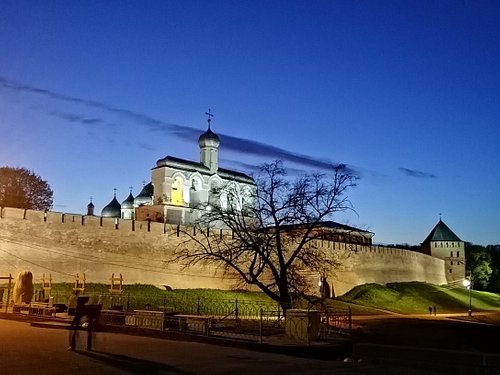
Other Top Attractions around Veliky Novgorod

What travellers are saying
- Novgorod Kremlin (Detinets)
- St. Sophia Cathedral
- Millennium of Russia
- St. George Monastery
- Granovitaya Palata
- Kremlin Park
- Kremlevskiy Beach
- Children Entertainment Center LES
- Yuryevskiy Beach
- Wildlife Park
- Center of Musical Antiquities
- Novgorod State Integrated Museum Reserve
Essential Veliky Novgorod
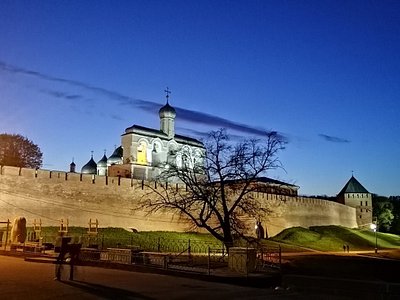
Veliky Novgorod Is Great For
Art & history.

Eat & drink

Historic sites
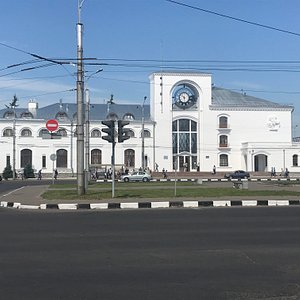
Top Things to Do in Veliky Novgorod, Russia
Places to visit in veliky novgorod, explore popular experiences, top attractions in veliky novgorod.

Other Top Attractions around Veliky Novgorod

What travellers are saying
- Novgorod Kremlin (Detinets)
- St. Sophia Cathedral
- Millennium of Russia
- St. George Monastery
- Granovitaya Palata
- Kremlin Park
- Kremlevskiy Beach
- Children Entertainment Center LES
- Yuryevskiy Beach
- Wildlife Park
- Center of Musical Antiquities
- Novgorod State Integrated Museum Reserve
- Bahasa Indonesia
- Slovenščina
- Science & Tech
- Russian Kitchen
5 tips for an unforgettable adventure in Veliky Novgorod: What to do, see and drink?
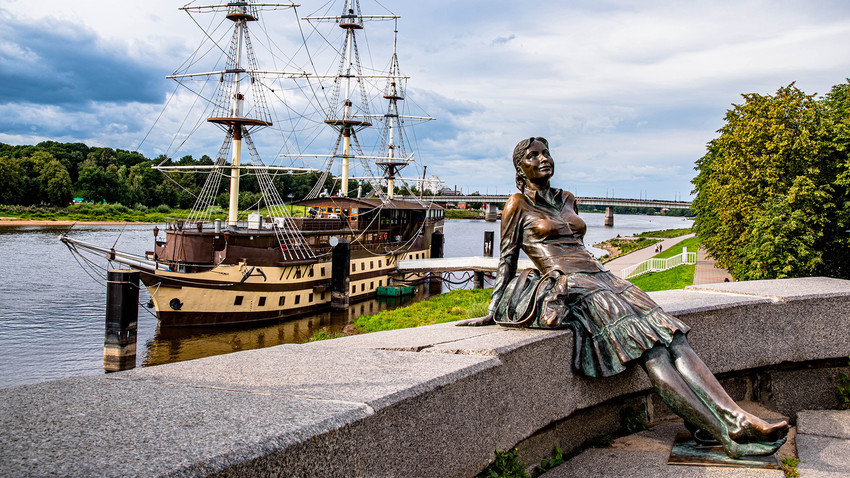
Veliky Novgorod is older than the Russian state itself and is the cradle of Russian civilization, and it’s a rare place where you can see the country’s oldest religious and civil architecture. The city is definitely worth seeing!
1. Take an unusual city tour
Well, you’ve arrived in the city, checked into your hotel and are ready for adventures. It’s not a secret that sightseeing can sometimes be very challenging ‘work’.
If you want to make the city tour more diverse, you can take the Bar’skie zabavy (“The lords’ amusement”) tour that will walk you around the city with stops in the most interesting bars where it’s possible to have degustations of the popular local cordials. The tour will explain what Novgorod citizens used to drink 500 years ago; how they prepared themselves before a night out; as well as how the bars or taverns of the time looked like (and when they first opened in Russia ).
Have you ever wandered around a cemetery in an ancient city at night? Well, we did it in order to write this article. Moreover, it was quite interesting: just make sure you are in a group of friendly people and have lamps and rubber boots; also, don’t be too sensitive.
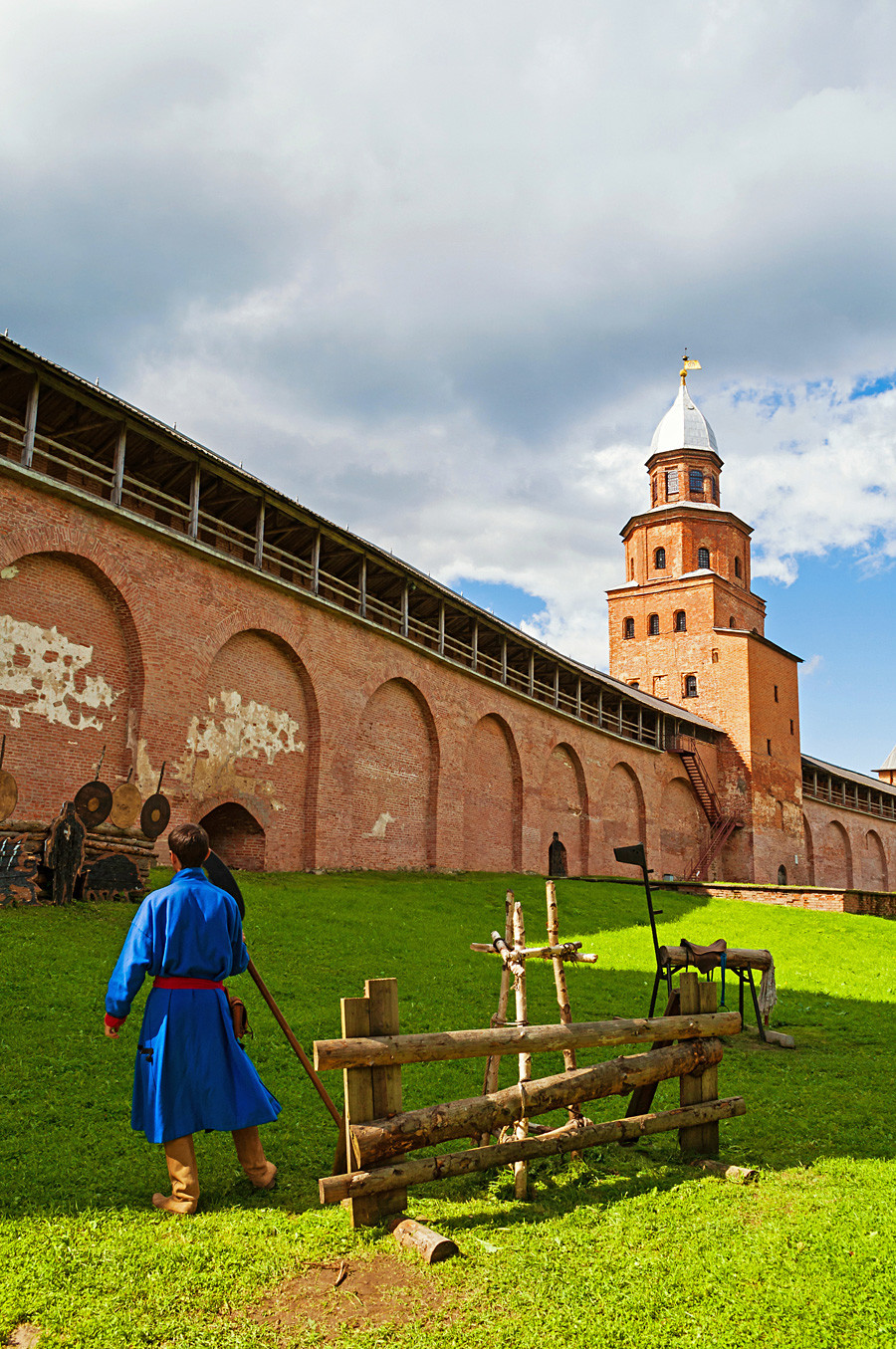
Kokui tower of Veliky Novgorod Kremlin and man dressed in medieval clothes in Veliky Novgorod, Russia.
While you are looking around waiting for the rising of the dead, your guide will tell you how people were buried in medieval Novgorod; explain where the cemetery symbols of the 18th-20th centuries originated from; how the funeral services industry changed in Soviet times; and where the famous Novgorodians found their last refuge.
For other special city tours (dedicated to the local community of Old Believers, ancient Russian icons, the history of Veliky Novgorod’s kremlin and the most important places of the city), as well as for more information on organising them, you may visit the Rus Novgorodskaya tourist center website.
2. Admire the heart of the city: Veliky Novgorod’s kremlin
Believe it or not, but the kremlin is the heart of many ancient Russian cities, not only Moscow. Located on the bank of the Volkhov River, this place is very picturesque with its bastions and golden domes, looking like a floating island that is ready to drift away.
Erected in the 11th century and occupying a place in UNESCO World’s Heritage List, this ancient fortress was built from stone and brick, and had the purpose to protect the city center. This is definitely the city’s heart and the number one place to visit in Veliky Novgorod.
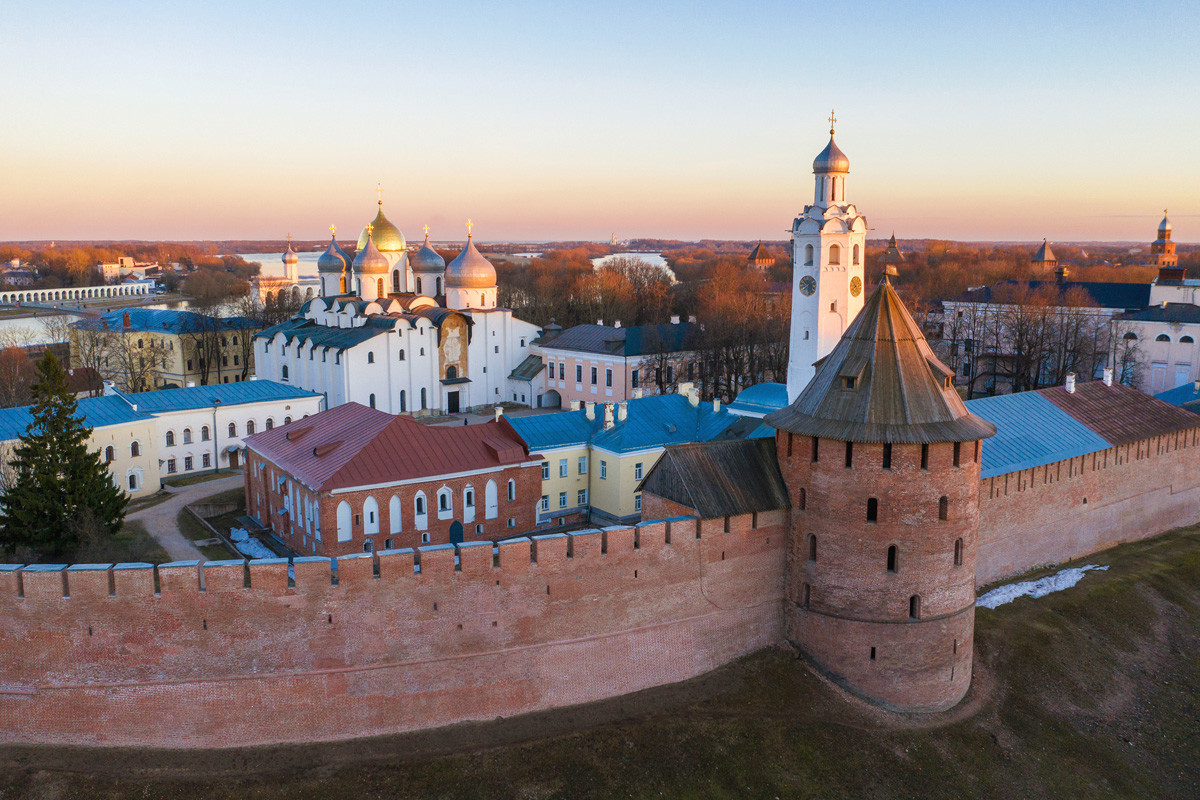
The kremlin’s main treasure, as well as in the entire city, is the 11th century Saint Sophia Cathedral with original frescoes of St. Konstantin and Elena that have been carefully preserved, as well as the 12th century priceless icon of the Sign of the Mother of God, which according to legend helped Novgorod in its battle against Suzdal. The cathedral also holds the relics of Russian saints and princes.
3. Walk around Yaroslav's court and ancient market
The area on the opposite side from the kremlin embankment got its name from the former residence of Prince Yaroslav the Wise. The architectural ensemble includes many priceless architectural works, with churches dating from the 12th to the 17th centuries, such as the most ancient one – the Byzantine-style St. Nicholas Cathedral.
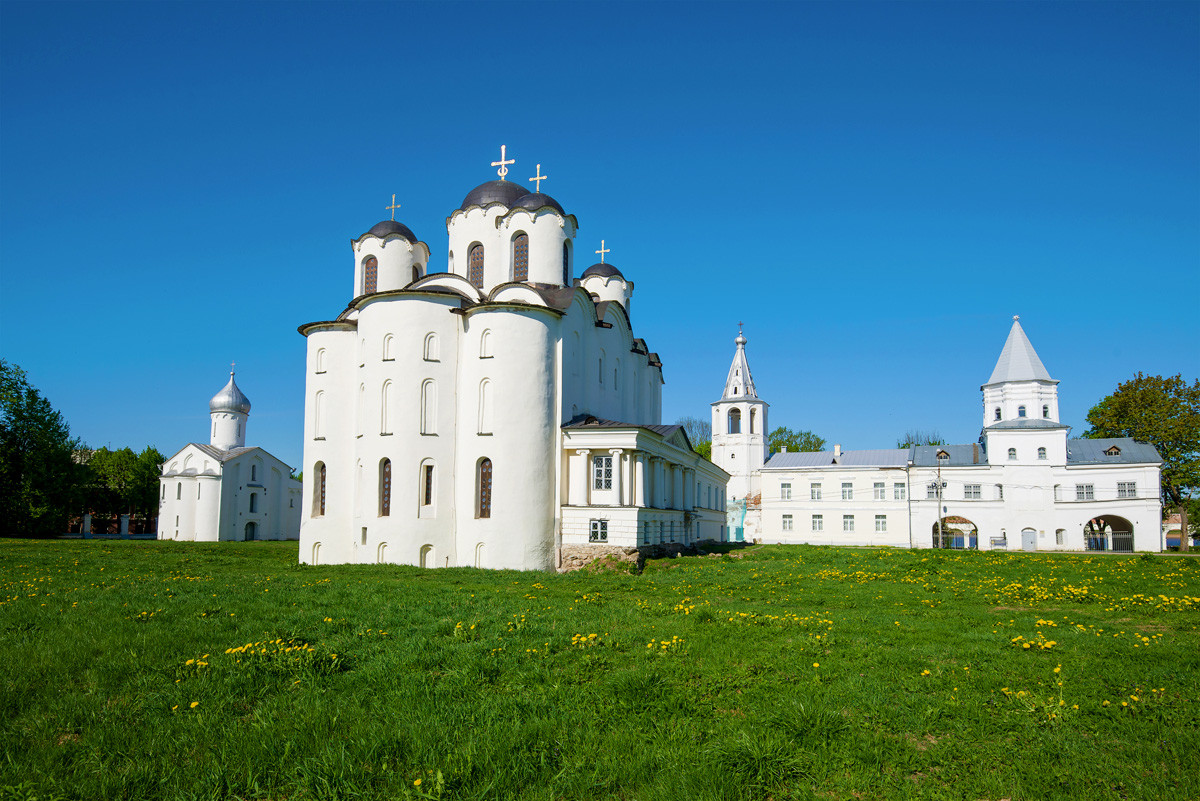
As the city was a member of the Hanseatic League, its marketplace was the largest on the trade route from the Varangians to the Greeks, with a vast variety of goods ranging from fur to honey. The old wall, which looks a lot like an ancient aqueduct, is a part of the Novgorod Marketplace building, and still stands on the riverside.
There is a cute monument to a tired tourist woman on the riverside in the most picturesque place, just in front of the kremlin. Don’t forget to take a picture and to leave a coin in the girl’s shoe; they say it brings good luck!
4. Taste the local cuisine
If you want to get the best view of the city, then you should definitely visit the Flagship Frigate restaurant, where you can have dinner in a ship that is moored to the shore of the Volkhov River, just in front of the kremlin. It’s a great place to celebrate your adventure.
There is also Zavod Bar on German Street that offers dishes cooked in a real Russian oven and specialties such as locally produced liquors (the factory that produces them is called Alcon).
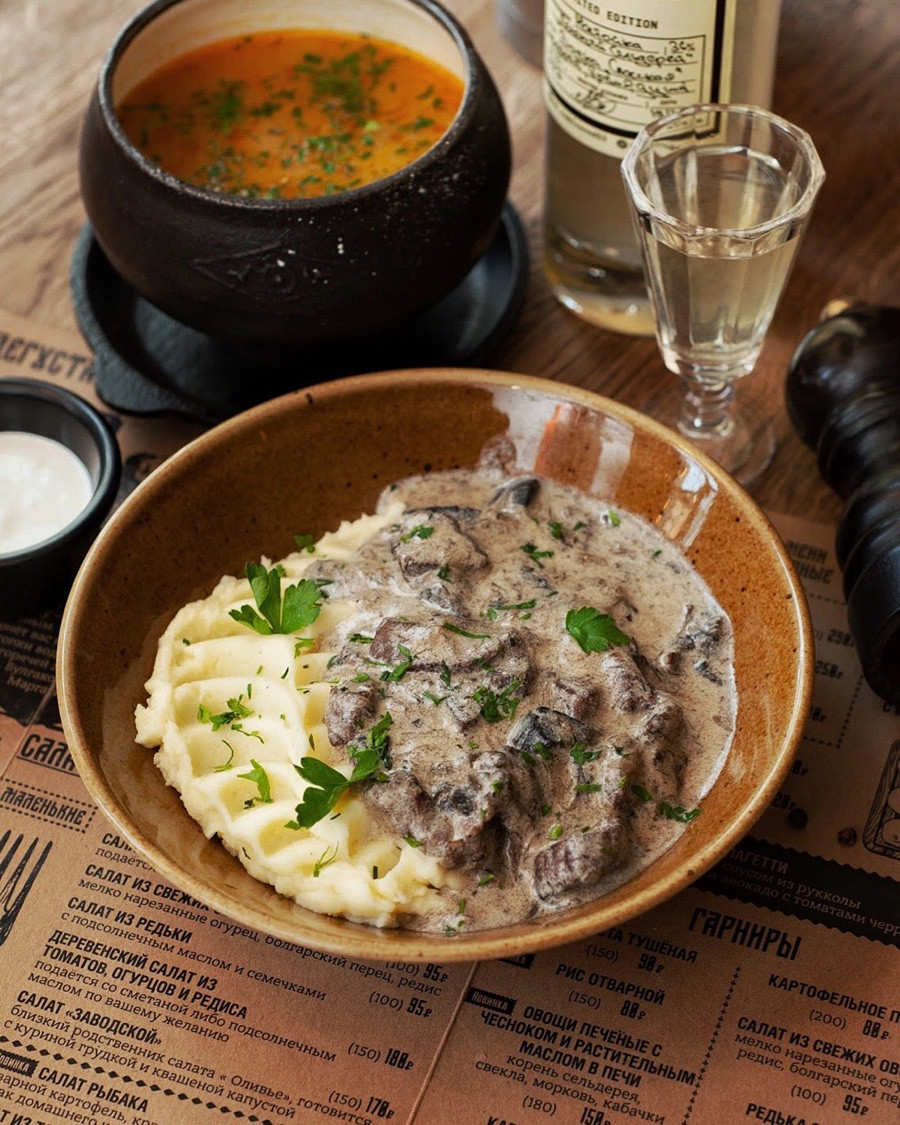
The Berg House on Big Moscow Street serves traditional merchant cuisine and is located in an original 19th century mansion.
Among the specialities of local cuisine are cabbage soup, various dishes made of fish, such as pike cutlets, as well as the national alcoholic drink, medovukha.
5. Buy souvenirs and local specialities
If you want to take home some souvenirs, you can visit one of the many gift shops and buy local sweets and desserts, such as gingerbread, ‘Dunkina radost’ candies, as well as spruce cone honey.
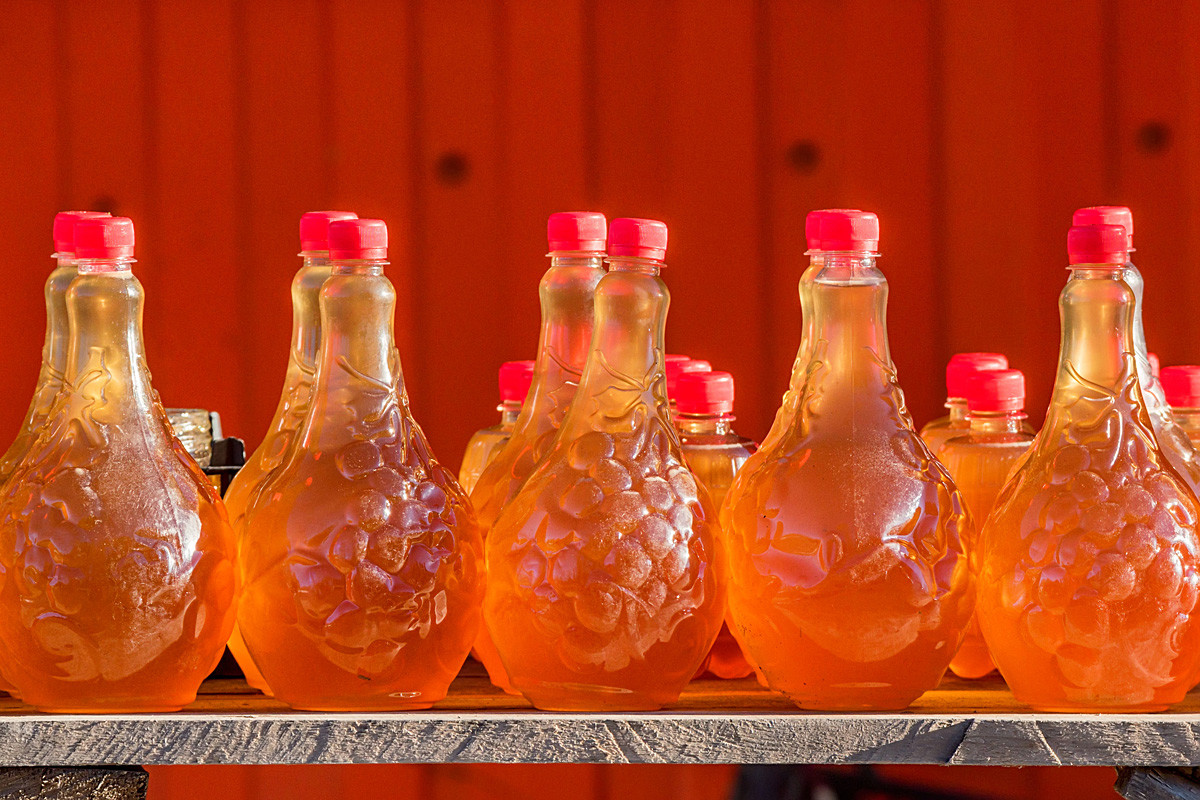
In order to pick up something truly special after your stay in Veliky Novgorod, don’t hesitate to buy some of the clothes, bed linen, elegant napkins and tablecloths that are produced at the Krestetsy Line Factory. They still preserve the unique 19th century traditions of Russian folk embroidery.
Local liquor and medovukha will also be a special gift to bring home.
If using any of Russia Beyond's content, partly or in full, always provide an active hyperlink to the original material.
to our newsletter!
Get the week's best stories straight to your inbox
- 5 must-see places in Uglich, the newborn pearl of Russia’s Golden Ring
- 5 World Cup day trips from Rostov-on-Don
- Can’t find your gate? 4 new design features to quickly navigate Moscow’s main airport Sheremetyevo
- Veliky Novgorod Region: Why you need to see the jewel in Russia’s ‘Silver Necklace’
This website uses cookies. Click here to find out more.


3-Day Veliky Novgorod Itinerary
Navigate forward to interact with the calendar and select a date. Press the question mark key to get the keyboard shortcuts for changing dates.
Navigate backward to interact with the calendar and select a date. Press the question mark key to get the keyboard shortcuts for changing dates.
- Veliky Novgorod in 3 days
- 1-Day Veliky Novgorod Itinerary
- 2-Day Veliky Novgorod Itinerary
- 4-Day Veliky Novgorod Itinerary
- 5-Day Veliky Novgorod Itinerary

Table of contents
Day 1: most popular attractions, day 2: keep it simple, day 3: east side of town, kremlin park.
Victory Monument
Track your travel spending and split costs with friends
Plan your trip. Keep your budget organized. Split the cost between tripmates. Wanderlog does it all.

Don’t forget to pack anything
Stay organized with a to-do list, packing list, shopping list, any kind of list.

Park Inn by Radisson Veliky Novgorod
Pokrovskiy sobor, city of military glory, tourist information centre "red izba", novgorod kremlin (detinets), episcopal (faceted) chamber, znamensky cathedral, kafe telegraf bar.

All travel reservations in 1 place
Never dig through your emails again — access all your flights, lodging, and any reservations in 1 place.

Popular road trips from Veliky Novgorod
What's the weather like in veliky novgorod.
It depends on when you visit! We've compiled data from NASA on what the weather is like in Veliky Novgorod for each month of the year: see the links below for more information.
- Weather in Veliky Novgorod in January
- Weather in Veliky Novgorod in February
- Weather in Veliky Novgorod in March
- Weather in Veliky Novgorod in April
- Weather in Veliky Novgorod in May
- Weather in Veliky Novgorod in June
- Weather in Veliky Novgorod in July
- Weather in Veliky Novgorod in August
- Weather in Veliky Novgorod in September
- Weather in Veliky Novgorod in October
- Weather in Veliky Novgorod in November
- Weather in Veliky Novgorod in December
All road trips from Veliky Novgorod
- Veliky Novgorod to St. Petersburg drive
- Veliky Novgorod to London drive
- Veliky Novgorod to Paris drive
- Veliky Novgorod to Moscow drive
- Veliky Novgorod to Berlin drive
- Veliky Novgorod to Prague drive
- Veliky Novgorod to Amsterdam drive
- Veliky Novgorod to Vienna drive
- Veliky Novgorod to Budapest drive
- Veliky Novgorod to Stockholm drive
- Veliky Novgorod to Helsinki drive
- Veliky Novgorod to Florence drive
- Veliky Novgorod to Tallinn drive
- Veliky Novgorod to Venice drive
- Veliky Novgorod to Milan drive
- Veliky Novgorod to Riga drive
- Veliky Novgorod to Krakow drive
- Veliky Novgorod to Copenhagen drive
- Veliky Novgorod to Warsaw drive
- Veliky Novgorod to Munich drive
- Veliky Novgorod to Brussels drive
- Veliky Novgorod to Vilnius drive
- Veliky Novgorod to Oslo drive
- Veliky Novgorod to Vatican City drive
- Veliky Novgorod to Hamburg drive
- Veliky Novgorod to Turin drive
- Veliky Novgorod to Bruges drive
- Veliky Novgorod to Dubrovnik drive
- Veliky Novgorod to Salzburg drive
- Veliky Novgorod to Gdansk drive
Explore nearby places
- Veliky Novgorod
- Staroye Rakomo
- Vyazhishchi
- Myasnoy Bor
- Tesovo-Netylskiy
- Staraya Russa
- Radofinnikovo
All related maps of Veliky Novgorod
- Map of Veliky Novgorod
- Map of Kovalyovo
- Map of Staroye Rakomo
- Map of Khutyn
- Map of Vyazhishchi
- Map of Sergovo
- Map of Lesnaya
- Map of Myasnoy Bor
- Map of Korostyn
- Map of Pustosh
- Map of Retle
- Map of Borisovo
- Map of Uzhin
- Map of Shimsk
- Map of Tesovo-Netylskiy
- Map of Nagovo
- Map of Yuryevo
- Map of Leokhnovo
- Map of Staraya Russa
- Map of Borshhovo
- Map of Chudovo
- Map of Soltsy
- Map of Kaskovo
- Map of Radofinnikovo
- Map of Kresttsy
- Map of Turovo
- Map of Luga
- Map of Tolmachevo
- Map of Fedos’ino
- Map of Lyuban
- Map of Yashchera
Veliky Novgorod throughout the year
- Veliky Novgorod in January
- Veliky Novgorod in February
- Veliky Novgorod in March
- Veliky Novgorod in April
- Veliky Novgorod in May
- Veliky Novgorod in June
- Veliky Novgorod in July
- Veliky Novgorod in August
- Veliky Novgorod in September
- Veliky Novgorod in October
- Veliky Novgorod in November
- Veliky Novgorod in December
Looking for other day-by-day itineraries in Veliky Novgorod?
Check out our other curated itineraries that are also filled with jam-packed days:

- Itinerary + map in one view
- Live collaboration
- Auto-import hotels and reservations
- Optimize your route
- Offline access on mobile
- See time and distance between all your places

- Visit Our Blog about Russia to know more about Russian sights, history
- Check out our Russian cities and regions guides
- Follow us on Twitter and Facebook to better understand Russia
- Info about getting Russian visa , the main airports , how to rent an apartment
- Our Expert answers your questions about Russia, some tips about sending flowers

Russian regions
- Arkhangelsk oblast
- Kaliningrad oblast
- Karelia republic
- Komi republic
- Leningrad oblast
- Murmansk oblast
- Nenets okrug
- Novgorod oblast
- Pskov oblast
- Vologda oblast
- Map of Russia
- All cities and regions
- Blog about Russia
- News from Russia
- How to get a visa
- Flights to Russia
- Russian hotels
- Renting apartments
- Russian currency
- FIFA World Cup 2018
- Submit an article
- Flowers to Russia
- Ask our Expert
Veliky Novgorod city, Russia
The capital city of Novgorod oblast .
Veliky Novgorod - Overview
Veliky Novgorod or Novgorod the Great (just Novgorod until 1999) is a city in the north-west of Russia, the administrative center of Novgorod Oblast. It is one of the oldest and most famous cities in Russia with more than a thousand years of history.
The population of Veliky Novgorod is about 224,800 (2022), the area - 90 sq. km.
The phone code - +7 8162, the postal codes - 173000-173902.
Novgorod city flag
Novgorod city coat of arms.
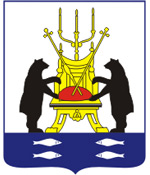
Novgorod city map, Russia
Novgorod city latest news and posts from our blog:.
7 January, 2022 / Nikolai Bugrov's Summer Dacha in Volodarsk .
27 September, 2020 / The Nikolo-Vyazhischi Convent near Veliky Novgorod .
30 August, 2020 / Staraya Russa - one of the oldest Russian towns .
31 March, 2019 / Vitoslavlitsy Museum of Folk Architecture .
28 January, 2019 / Veliky Novgorod Kremlin .
More posts..
History of Veliky Novgorod
Foundation of novgorod and the novgorod republic.
The official founding year of Novgorod is 859, when it was first mentioned in the chronicle. In 862, the so-called “vocation of the Varangians” led by Rurik took place on Novgorod land, which was the beginning of the formation of the Old Russian state. In 882, after the death of Rurik, Prince Oleg became the ruler of Novgorod. He captured Kiev and moved the capital of the state to it. It was the beginning of the Kievan Rus state.
Novgorod was the second town of the Kievan Rus by cultural, economic, and political influence. In 1045-1050, the Cathedral of St. Sophia was built - the main Orthodox church of Novgorod and one of the oldest preserved stone churches in Russia.
The convenient location of Novgorod at the intersection of trade routes “from the Varangians to the Greeks” made it the largest center of intra-Russian and international trade. Constant contacts of the town with the island of Gotland, German towns and the Hansa led to the opening of the first foreign missions on the territory of Novgorod.
The first attempts of Novgorod to gain independence from the Kievan Rus were taken in the 11th century. Novgorod boyars, with the support of the local population, wanted to get rid of the burden of Kiev taxation and to create their own army. In 1136, due to the retreat of Prince Vsevolod Mstislavovitch from the battlefield at Zhdanaya mountain, he was exiled from Novgorod, and a republican government was established in the region.
From 1136 to 1478, Novgorod was the capital of the Russian medieval state known as the Novgorod Republic. In the 12th century, the Novgorod land included part of the Baltic, part of Karelia, the southern part of Finland, the southern coast of Lake Ladoga, the banks of the Northern Dvina River, and vast areas of the European north up to the Urals.
More Historical Facts…
During the Mongol invasion of Rus, Novgorod avoided destruction due to its remote location. It was the only old Russian town that avoided decline in the 11th-12th centuries. In 1259, with the support of Prince Alexander Nevsky, the Mongols conducted a census in Novgorod to collect tribute. In 1280, in Novgorod, a document was drawn up known as “Russian Truth” - the very first set of laws in Russia. Until the 15th century, Novgorod’s possessions expanded to the east and northeast.
Areas northeast of Novgorod were rich in fur-bearing animals and salt. These resources were of great importance for the economy of the Novgorod Republic, which was based on trade. The town was part of the trade route from Scandinavia to Byzantium. The Russian folk hero Sadko was a merchant from Novgorod.
The Novgorod Republic was characterized by some features of the social system and feudal relations: a significant social and landowning weight of the Novgorod boyars and their active participation in trade and other activities. The main economic factor was not land, but capital. This led to a special social structure of society and an unusual form of government for medieval Rus.
The veche - a gathering of a part of the male population of the town - had broad powers. It invited, judged and expelled Novgorod princes; elected the mayor and the military leader; resolved issues of war and peace; passed and repealed laws; set the size of taxes and duties; elected representatives of the authorities in the Novgorod lands and tried them.
From the 14th century, the Tver and Moscow principalities, and the Grand Duchy of Lithuania attempted to subdue the Novgorod Republic. In 1470, Novgorod people asked the Metropolitan of Kiev to appoint a bishop for them (Kiev belonged to the Grand Duchy of Lithuania at that time). After it, Ivan III, the Grand Prince of Moscow, accused them of treason. In 1471, he announced a military campaign against Novgorod. Moscow troops defeated Novgorod militia during the battle on the Shelon River and took the town.
In 1478, after a series of wars against Moscow, Novgorod lost its independence and the Novgorod Republic ceased to exist. The veche was abolished, the veche bell was taken to Moscow; power in the town was granted to the governors appointed by the Grand Prince of Moscow. A lot of boyar families were expelled from Novgorod.
Novgorod in the 16th-19th centuries
The oprichnina pogrom perpetrated in the winter of 1569/1570 by the army personally headed by Ivan the Terrible inflicted enormous damage on Novgorod. The reason for the pogrom was a denunciation and suspicion of treason. The town was plundered, the property of churches, monasteries and merchants was confiscated, thousands of residents were killed. In 1571, the population of Novgorod was about 5,000 people.
From 1611 to 1617, during the Time of Troubles, Novgorod was occupied by the Swedes. After the occupation, half of the town was burnt down. The population decreased to only about 500 residents. Nikon (the most famous Russian Patriarch) was the metropolitan of Novgorod in 1648-1652.
In 1700, the Great Northern War began. After the defeat at Narva, Peter I hastily prepared the fortifications of Novgorod for a possible siege of the Swedes. Swedish troops did not reach Novgorod; nevertheless, the Novgorod regiment played an important role in the Battle of Poltava in 1709.
In 1703, in connection with the founding of St. Petersburg, the new capital of Russia, a lot of craftsmen from Novgorod were involved in its construction. At the same time, Novgorod finally lost its former importance as a trade center and turned into an ordinary provincial town. In 1727, a separate Novgorod Governorate was formed with its center in Novgorod.
In the first half of the 19th century, Novgorod became the center of military settlements. At the same time, there was almost no industrial production in the town. In 1841-1842, the writer Alexander Herzen was in exile in Novgorod.
One of the brightest pages in the history of Veliky Novgorod in the 19th century was the celebration of the 1000th anniversary of the Russian state in 1862. In honor of this event, a monument to the Millennium of Russia was erected in the center of the Novgorod Kremlin. In 1875, 17,384 people lived in Novgorod, along with military units. 12 small enterprises employed only 63 workers.
Novgorod in the 20th century
Despite the increased interest in its history, Novgorod both at the end of the 19th century and at the beginning of the 20th century remained a typical provincial town of the Russian Empire, despite its status as a regional capital. In 1914, the population of Novgorod was about 28,200 people.
In 1927, as a result of the administrative-territorial reform carried out in the USSR, the Novgorod Governorate became part of Leningrad Oblast. The Leningrad leadership viewed the Novgorod land as a rural region. No industrialization was planned.
From August 15, 1941 to January 20, 1944, during the Second World War, Novgorod was occupied by German and Spanish troops (“The Blue Division”). The war caused huge and in many ways irreparable damage to the monuments of the city itself and its environs. All wooden buildings burned down. The most valuable collections of archeology, history and art were plundered from the Novgorod museum, which was not completely evacuated in time. Almost the entire city infrastructure and industrial enterprises were destroyed, world famous monuments of Novgorod architecture were turned into ruins.
On July 5, 1944, Novgorod Oblast was formed. The transformation of Novgorod into the administrative and economic center of a separate region had a beneficial effect on the acceleration of its restoration. On November 1, 1945, Novgorod was included in the list of 15 Soviet cities subject to priority restoration. In addition, a special decree was issued on the restoration of architectural monuments. One of the first to be restored was the Millennium of Russia monument.
In the post-war years, the presence of large undeveloped areas and wastelands after the dismantling of the rubble of destroyed buildings in the city center made it possible to begin extensive archaeological research. The results of these studies were numerous finds of objects of old Russian art and everyday life. One of the most important finds was the discovery of the first birch bark letter on July 26, 1951. Archaeological research continues to this day.
In the 1950s-1970s, the main restoration work of architectural monuments was carried out. Novgorod became known as the center of all-Union and international tourism. In 1964, not far from the old Yuryev Monastery on the shore of Lake Myachino, the creation of the Vitoslavlitsy Museum of Folk Wooden Architecture began. In 1967, the population of the city was about 107,000 people.
In 1992, 37 unique monuments of old Russian culture in Novgorod were included in the UNESCO World Cultural Heritage List. The population of the city reached its maximum and amounted to 235 thousand people.
On June 11, 1999, the President of the Russian Federation Boris Yeltsin signed the federal law “On renaming the city of Novgorod, the administrative center of Novgorod Oblast, into the city of Veliky Novgorod.” Also in the 1990s, a lot of streets in the city center received their historical names back.
Monuments of Veliky Novgorod
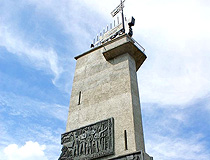
Victory Monument in Veliky Novgorod
Author: Sergey Duhanin
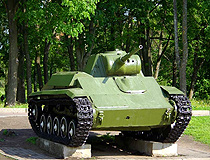
Light tank T-70 in Veliky Novgorod
Author: Konstantin Matekhin
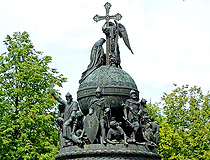
Monument to the Millennium of Russia in Veliky Novgorod
Veliky Novgorod - Features
Veliky Novgorod is deservedly called “the father of Russian cities”. In this place the Russian statehood was born. The city stands on the banks of the Volkhov River, 6 km from Lake Ilmen, 575 km north-west of Moscow and 190 km south-east of St. Petersburg. Due to similar names, Veliky Novgorod is often confused with Nizhny Novgorod. And this applies not only to foreigners, but also to residents of Russia.
The Volkhov River divides the city into two parts: Sofia and Torgovaya (Trade) sides. The Sofia side got its name from the Sofia Cathedral, which is about one thousand years old. The main part of the city is located here, including the Novgorod Kremlin and the historic center, as well as new districts.
In the old days, there was a large market on the Trade side - Torg. Today, it is built up mainly with private houses. The Yaroslav’s Courtyard is also located here. It is a historical and architectural complex on the site where the residence of Yaroslav the Wise (Prince of Novgorod in 988-1015) used to be.
The climate of Veliky Novgorod is moderately continental, with cold snowy winters and moderately warm summers. The average temperature in January is minus 9.2 degrees Celsius, in July - plus 17.3 degrees Celsius.
Novgorod Oblast has a unique transport and geographical position. The main highway, rail, air, and water transport routes connecting St. Petersburg and Moscow pass through its territory. Public transport in the city is represented by buses, trolleybuses.
The region’s largest employer is the chemical fertilizer plant “Acron”, which produces ammonia, saltpeter, nitric acid, and other substances. This enterprise is one of the world’s largest fertilizer producers. The plant in Veliky Novgorod employs about 5 thousand people.
Tourism is gradually becoming more and more important in the city’s economy. Veliky Novgorod is rightly called the city-museum of Old Rus. No other city in Russia has so many remarkable architectural monuments and monumental paintings of the 11th-17th centuries. The architecture of Veliky Novgorod is unique because a lot of old churches have survived here. A significant part of them were erected in the period from the 11th to the 16th centuries. In some churches, old wall paintings have been preserved, which are of great cultural value.
The main discovery made on the territory of Veliky Novgorod is more than 1,000 preserved birch bark letters of various contents written in the 11th-15th centuries. These include business letters, love letters, recipe notes, Bible commentaries, commercial calculations, and even student scribbles.
Main Attractions of Veliky Novgorod
Novgorod Detinets (Kremlin) - the fortress of Veliky Novgorod located on the left bank of the Volkhov River, the oldest preserved kremlin in Russia and the most northern one. The first mention of it in chronicles dates back to 1044. It is an architectural monument of federal significance. Novgorod Detinets as part of the historic center of Veliky Novgorod is included in the UNESCO World Heritage List.
The construction of the stone fortress was completed by the end of the 15th century. About 1.5 kilometers of fortress walls, nine towers, and old churches have survived to this day. A road going through the Novgorod Kremlin leads to the bridge connecting the Sofia and Torgovaya sides of the city. The 41-meter watchtower known as “Kokuy” offers a great view of the entire city and its surroundings.
Today, it is the cultural and tourist center of Veliky Novgorod. Here you can find the main expositions of the Novgorod Museum-Reserve (the exposition of the Old Russian arts and crafts and jewelry in the Chamber of Facets; “History of the Novgorod Region”, “Old Russian icon painting”, “Russian art of the 18th-20th centuries”), restoration workshops, a library, philharmonic society, college of arts, and a music school. The Novgorod Kremlin is surrounded by a spacious park. A walk from the railway station to the Novgorod Kremlin takes about 20 minutes.
Saint Sophia Cathedral (1045-1050) - the main Orthodox church in Veliky Novgorod located on the territory of the Novgorod Kremlin, one of the oldest churches in Russia. Churches of this type were built in Rus only in the 11th century. Sophia Cathedral was built in the Byzantine style, has a pyramidal structure and 6 domes. This is one of the symbols of Veliky Novgorod.
The belfry of St. Sophia Cathedral rises above the Novgorod Kremlin in the form of a wall with five spans in the upper part. This type of structure was invented during the reign of the Novgorod Archbishop Euthymius II and then repeated in Russia only twice.
Monument to the Millennium of Russia (1862) - a magnificent monument more than 15 meters high erected opposite the St. Sophia Cathedral in honor of the millennium anniversary of the legendary vocation of the Varangians to Rus. The monument consists of 128 figures. At the very top you can see an angel - the personification of Orthodoxy and a woman depicting Rus, below - princes, church hierarchs and enlighteners, who took part in important historical events that happened over the thousand-year history of Russia.
Yaroslav’s Courtyard and Torg - an architectural complex located opposite the Novgorod Kremlin, on the other bank of the Volkhov River. Both banks are connected by a pedestrian bridge. Several monuments of the 12th-16th centuries have survived on its territory, including the Nikolsky Cathedral (1113) and the Church of Paraskeva Pyatnitsa (the 13th century). The place was named after Prince Yaroslav the Wise. In old times, fairs were held here. The most recent construction is the arcade of the Gostiny Dvor, which consists of several dozen white-stone arches.
St. George’s (Yuriev) Monastery . Founded in 1030, it is one of the oldest monasteries in Russia, a cultural heritage site of federal significance. The monastery is located on the southern outskirts of Veliky Novgorod on the bank of the Volkhov River. On the territory of the monastery there are St. George, Spassky, and Holy Cross Cathedrals, a four-tiered bell tower 52 m high, and several old churches. Crowned with three silvery domes, St. George’s Cathedral is a wonderful example of Old Russian architecture. The Vitoslavlitsy Museum is located nearby. Yur’yevskoye Highway, 10.
Museum of Folk Wooden Architecture “Vitoslavlitsy” . This open-air exhibition was opened in 1964. 22 wooden architectural monuments of the 16th-20th centuries - churches, residential buildings, and outbuildings - were brought here from different districts of the Novgorod region.
Inside the peasant huts, you can see recreated old interiors: “Winter Life”, “Wedding”, “Wool Felting Craft”, and others. Folk festivals are also held on the territory of the museum. On the second floor of the souvenir shop there is the Museum of Irons with a unique collection of irons of the 18th-20th centuries. Yur’yevskoye Highway, 14.
Center for Musical Antiquities named after V.I. Povetkin . The unique collection of this museum acquaints visitors with the old musical instruments of Rus. Here you can also hear old Russian music. Most of the exhibits date back to the 10th-15th centuries. For the guests of the center, folk songs of the Russian North-West and North are performed. Choir concerts are held on holidays. Il’ina Street, 9b.
Art Museum . The permanent exhibition of this museum is dedicated to Russian art of the 17th-20th centuries. It was opened in the historic building of the Noble Assembly in 2001. The rich collection of the museum includes paintings, drawings, sculptures, miniatures, etc.
Among the most valuable exhibits are paintings created by such masters as K. Bryullov, I. Repin, A. Aivazovsky and sculptures, including M. Antokolsky and M. Vrubel. The museum’s collection of Russian art objects is considered one of the best outside Moscow and St. Petersburg. Sofiyskaya Square, 2.
Museum of Artistic Culture of the Novgorod Land . This museum was opened in one of the buildings of the Desyatinnyy monastery in 2002. The exposition is composed of works by Novgorod artists of the late 20th - early 21st centuries. In addition to paintings, visitors can look at porcelain and glass products made by local craftsmen. Desyatinnyy Lane, 6.
Novgorod city of Russia photos
Pictures of veliky novgorod.
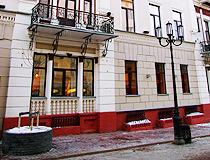
Veliky Novgorod architecture
Author: Elena Abramova
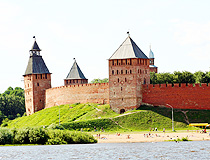
Veliky Novgorod Detinets (Kremlin)
Author: Ismail Soytekinoglu
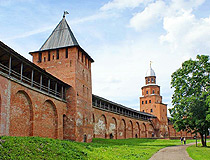
Veliky Novgorod Fortress
Picturesque churches of Veliky Novgorod
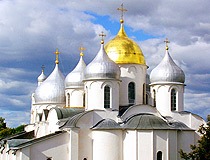
St. Sophia Cathedral in Veliky Novgorod
Author: Zaritsky Igor
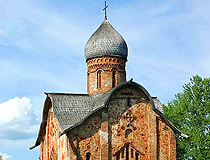
Peter and Paul Church in Veliky Novgorod
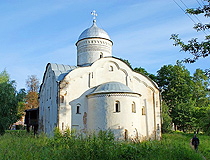
Church of Clement, Pope of Rome in Veliky Novgorod
Old churches of Veliky Novgorod
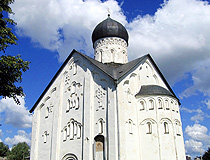
Church of the Transfiguration on Ilyin in Veliky Novgorod
Author: Sergey Popov
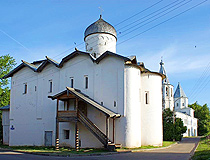
Myrrhbearers Church in Veliky Novgorod
The questions of our visitors
There are several ways of going from the airport of St. Petersburg to Veliky Novgorod.
The fastest one and of course the most expensive is to go by taxi from the airport straight to the destination city. The price is about 4,500-5,000 Rubles (about 70-80 USD).
Another way is to go by train. From the airport you should go to Vitebsky railway station, departure: 7:53, arrival: 13:06 local time. Also you can go to Moskovsky railway station. There are two trains: the first one departs at 8:12 and the second one - at 17:18). Not sure about the price of the tickets but much cheaper than going by taxi.
The third variant is to go by bus. You should go to the bus station at Obvodnoy Canal Embankment. The first bus departs at 7:30; the latest - at 21:30.
- Currently 3.13/5
Rating: 3.1 /5 (188 votes cast)
Sponsored Links:
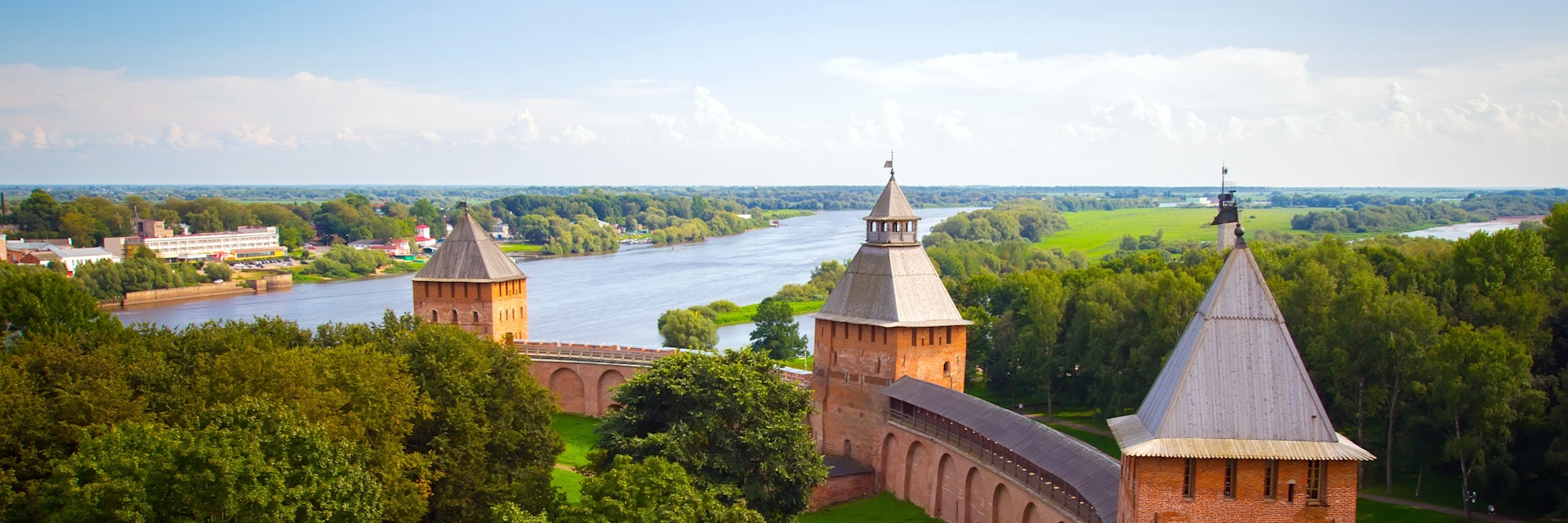
©Andrey Pozharskiy/Shutterstock
Veliky Novgorod Kremlin
Top choice in Veliky Novgorod
On the west bank of the Volkhov River, and surrounded by a pleasant wooded park, the kremlin is one of Russia’s oldest. Originally called the Detinets (and still often referred to as such), the fortification dates to the 9th century, and was rebuilt with brick in the 14th century; this still stands today. The complex is worth seeing with a guide; arrange one through the tourist office . You can walk part of the kremlin walls for views over the complex and the city.
Boat tours operate from the kremlin's pier.
Suggest an edit to this attraction
Lonely Planet's must-see attractions
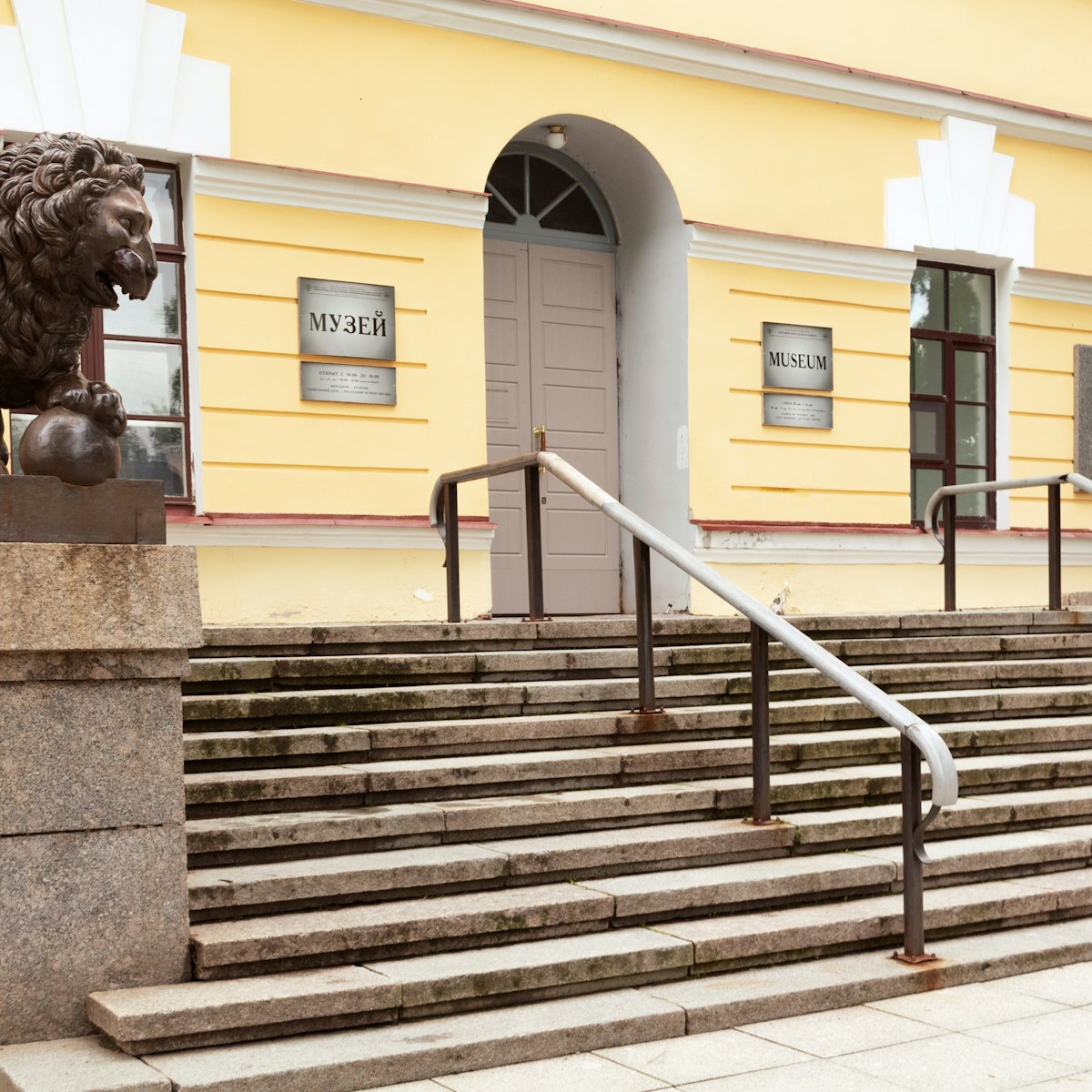
Novgorod State United Museum
Within the kremlin walls is this must-see museum that houses three strikingly comprehensive exhibitions covering the history of Veliky Novgorod, Russian…
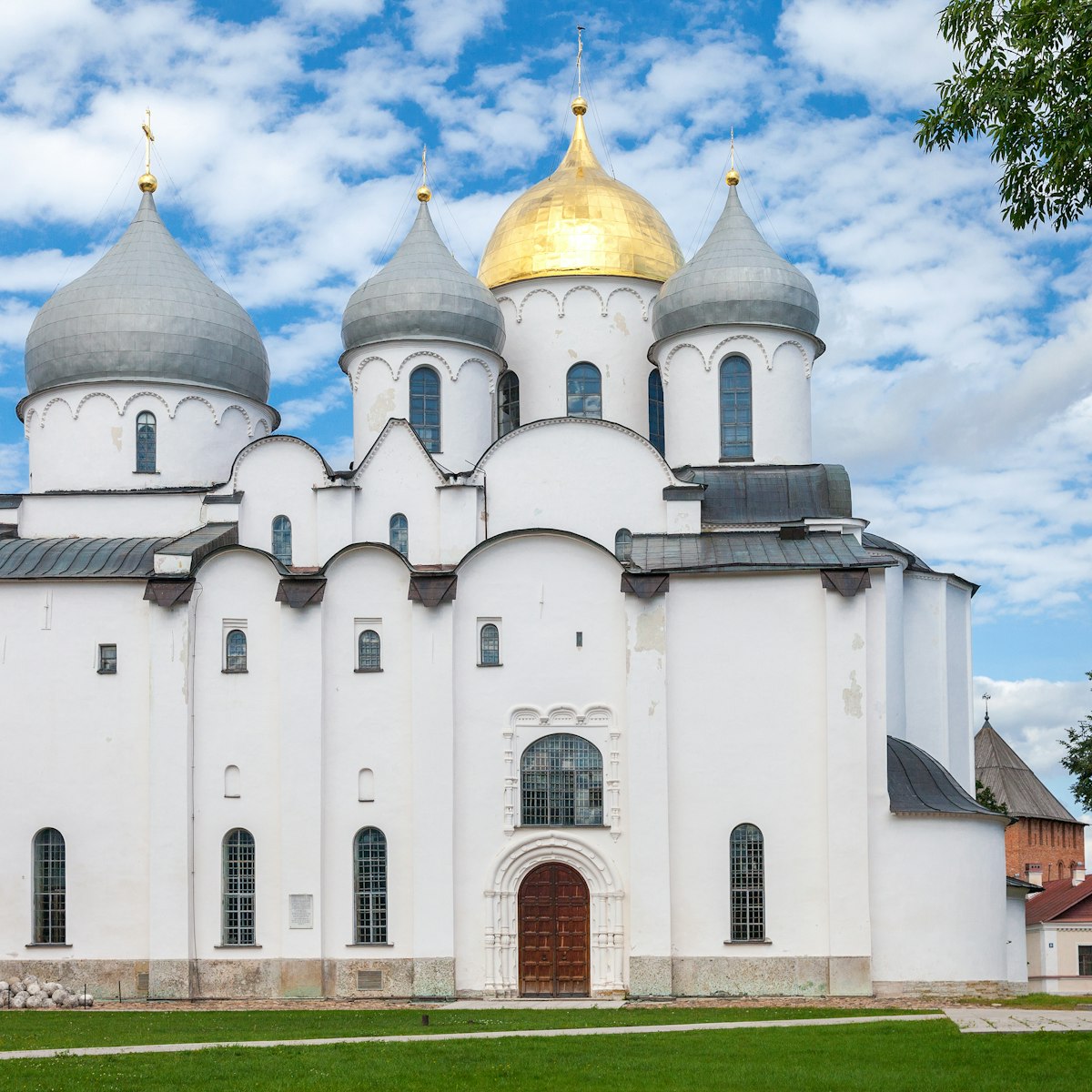
Cathedral of St Sophia
This is the oldest church in Russia (finished in 1050) and one of the country's oldest stone buildings. It's the kremlin's focal point and you couldn't…

Church of the Transfiguration of Our Saviour on Ilyina Street
This compact church is famous for housing the only surviving frescoes by legendary Byzantine painter Theophanes the Greek (1378) – they came close to…

Vitoslavlitsy
Vitoslavlitsy is an evocative open-air museum of 22 beautiful wooden peasant houses and churches, some dating back to the 16th century, and the highlight…

Millennium of Russia Monument
This gargantuan 16m-high, 100-tonne sculpture was unveiled in 1862 on the 1000th anniversary of the Varangian Prince Rurik’s arrival, a moment heralded as…

St George’s Monastery
Set amid peaceful marsh and lakelands a 15-minute bus ride south of the Veliky Novgorod town centre, the picturesque St George’s Monastery makes for a…

Yaroslav's Court
Across a footbridge from the kremlin are the photogenic remnants of an 18th-century market arcade. Beyond that is the market gatehouse, an array of…

The belfry, with its enormous steel bells, has a small bell museum and an observation platform providing good photo opps of the Cathedral of St Sophia on…
Nearby Veliky Novgorod attractions
1 . Millennium of Russia Monument
2 . Novgorod State United Museum
3 . Cathedral of St Sophia
5 . Kremlin Wall Walk
Walk part of the kremlin walls for views over the fortress, out to the beach and across the sparkling river. Tickets are sold at the belfry; you can get a…
6 . Chamber of Facets
Part of a palace built in 1433, this Gothic chamber once housed Novgorod's Supreme Court and was the scene of many ceremonies and soirées, not all of them…
7 . Kokui Tower
The 41m-tall Kokui Tower was built in the 18th century, and a climb up its narrow stairs provides panoramic views across the kremlin complex and the city…
8 . Fine Arts Museum
A strong provincial collection of paintings by 18th- and 19th-century Russian artists, as well as temporary shows. The 3rd floor features Novgorod artists.

Art & Culture Travel Blog
Searching for old russia: a guide to visiting veliky novgorod and pskov.
- Tea Gudek Šnajdar

What are the most exciting places to visit in Russia? For most tourists, the choice is limited to Saint Petersburg, Moscow and royal residences nearby. But what are those unexplored, reserved Russian towns described in many classic books and movies? Well, look no further. Here is a story about two beautiful old cities and a guide to visiting Veliky Novgorod and Pskov.
Visiting Veliky Novgorod and Pskov
This is a guest blog post about visiting Veliky Novgorod and Pskov, written by Alexandra and Karina, local Russian art and history experts. You can read more of their stories and check out some beautiful art tours they are organising on a link here .
Suppose you are really interested in Russian history and culture, and there are a few extra days in your trip itinerary. In that case, this Veliky Novgorod and Pskov guide is for you! In it, you’ll learn about ancient Russia and how to visit the places from where the Russian State began many centuries ago.
Visiting Veliky Novgorod and Pskov is not hard from Saint Petersburg. They could be easily visited on a one-day or two-day trip from there. According to ancient annals, in the 9th century, the Russian statehood and nationality were formed under the rule of the Rurik Dynasty.
In those two cities, both protected by UNESCO, the grandest amount of Russian medieval architecture and art is concentrated. Every stone in the walls of their Kremlins and old pavements literally breathes with history, and their deep cultural layer still keeps many mysteries.
⤷ Read more : Saint Petersburg Travel Guide
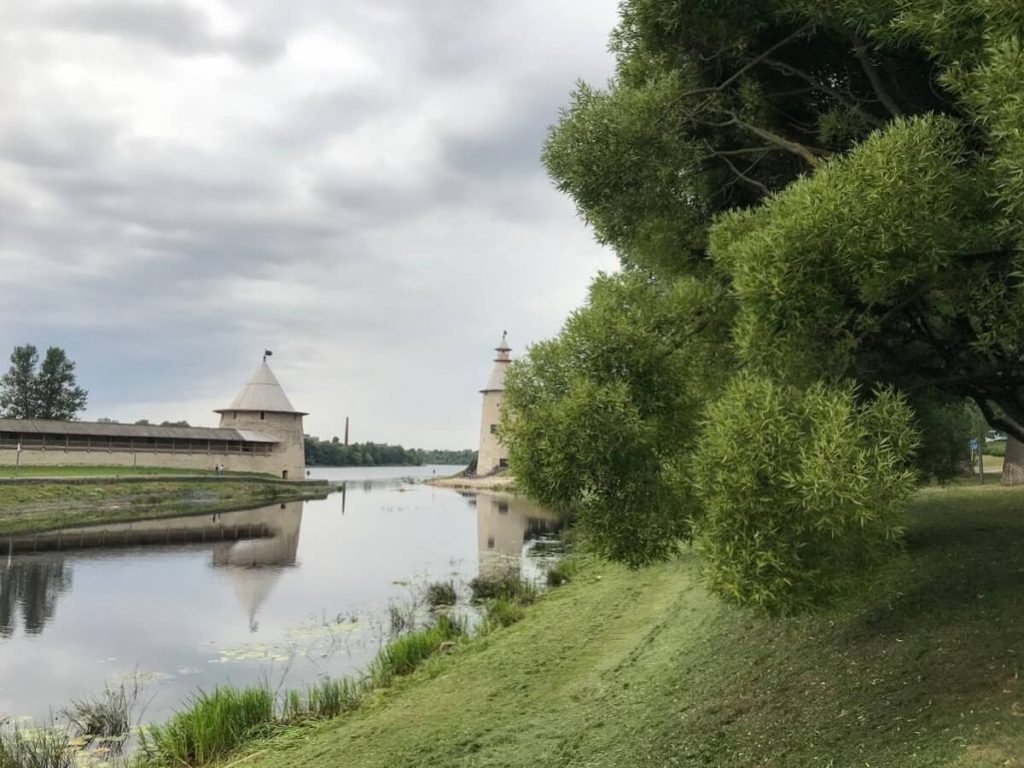
How to get to Veliky Novgorod and Pskov from Saint Petersburg
⤷ Veliky Novgorod is located some 180 km from Saint Petersburg. It can be reached by train, bus or car via the new highway. Trains to Veliky Novgorod leave from Saint Petersburg Railway Station just off the Nevsky Avenue. Rail journey will take you three hours in a comfortable train, and it is more recommendable if you are getting there on your own.
⤷ Pskov is further away from Saint Petersburg in the direction to the border with Estonia and Latvia. The most convenient way to get to Pskov is by Lastochka express train that leaves Baltiysky Railway station (Metro Station Baltiyskaya). The journey is 3,5 hours long.
There is also a daily Lastochka train that connects Veliky Novgorod and Pskov – so you can actually combine the visit to both cities and return to Saint Petersburg! The journey time on this express train between Novgorod and Pskov is around four hours.
History Overview: Where does the Russian land come from?

According to the legends and the Primary Chronicle from the 9th century, various pagan Slavic tribes, warring between each other, decided to seek the prince across the sea to establish peace in their lands.
Our land is great and abundant, but there is no order in it. Come to reign and rule over us.
Three Varangians responded to this call – they were attracted by the wealth of vast overseas territories. Their names were Rurik, Sineus and Truvor. According to one version, they were called the Rus, hence the name Russia.
The historians still argue about who they actually were and where did precisely they come from. Still, there is no doubt that the state was actually born in the northwest of present-day Russia.
Rurik Dynasty is a princely, and later royal family of descendants of Rurik – the first prince of ancient Russia, mentioned in chronicles. They ruled Russia for six centuries. As time went by, the dynasty was divided into numerous branches – principalities. The descendants of Ruriks also ruled in Croatia in union with Hungary, Grand Duchy of Lithuania, Bulgaria and Georgia.
⤷ Read more : Visiting Hermitage Museum in Saint Petersburg
History of Veliky Novgorod and Pskov
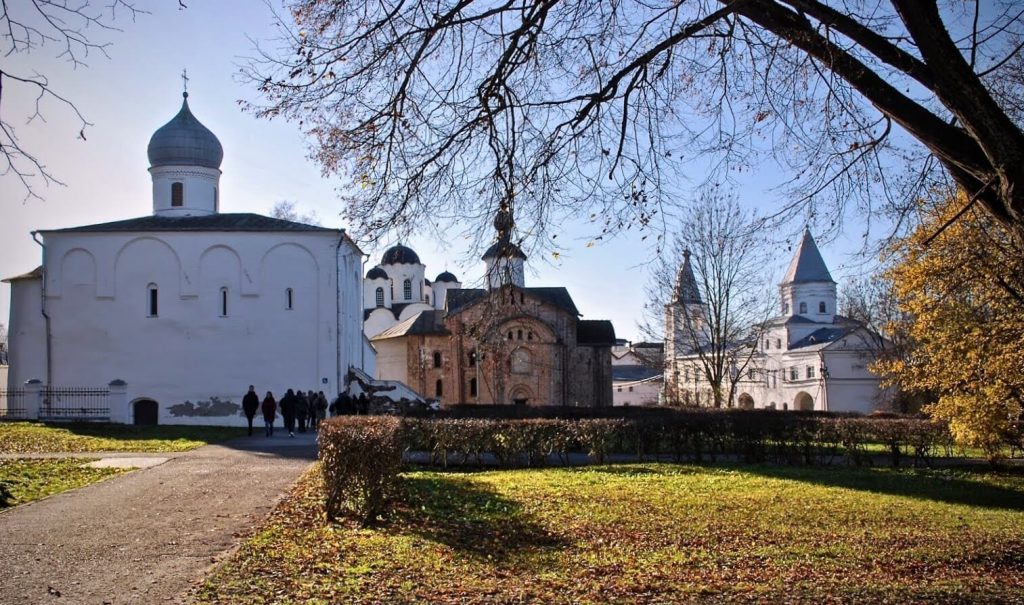
In the vicinity of old settlements on Vokhov and Pskova rivers’ shores, soon significant and prosperous cities grew up. Novgorod (first mentioned in 859) and Pskov (first mentioned in 903) later became the largest cities of medieval Europe and part of Hanseatic League.
Both cities played a crucial role in the formation of the Russian national character. As well as cultural, economic, religious life, and the social structure of the future Russian Empire.
For many centuries, these lands were known as Republics. Until the mid-15th century, Novgorod and Pskov were economically independent city-states. The power in them belonged to ‘Veche’ – the union of boyars (nobility in pre-Imperial Russia), tradesmen and free citizens. They ruled the cities, as well as chose the prince governor and archbishop. The prince could not take any important political decision without their approval. Thus, his power was limited to the army and court administration.
⤷ Read more : The history behind Fabergé Eggs
During the Tatar-Mongol invasion’s difficult period, the rich lands of Novgorod and Pskov were not ruined. However, they had to pay tribute to the Horde. Therefore, they did not cease developing politically and economically during the 13th and 14th centuries.
The structure of Novgorod and Pskov Republics resembled the social and political system of the Venetian Republic in many ways. The Republic of Novgorod was particularly large – it stretched to the White Sea in the north and beyond the east’s Ural Mountains.
Between the mid 15th and early 16th century, the Republics lost their independence when they were conquered by the Moscow principality and united with the rest of Russian principalities.
Hopefully, this short overview will help you understand what immense cultural wealth is hidden in these lands. They are the key source of information about everyday life in ancient Russia. They preserved both the largest number of common household objects and examples of Russian medieval art. There are still many ongoing archaeological excavations in them.
⤷ Read more : Visiting Peterhof Palace from Saint Petersburg
What to see in Veliky Novgorod in a day
Kremlin – detinets.
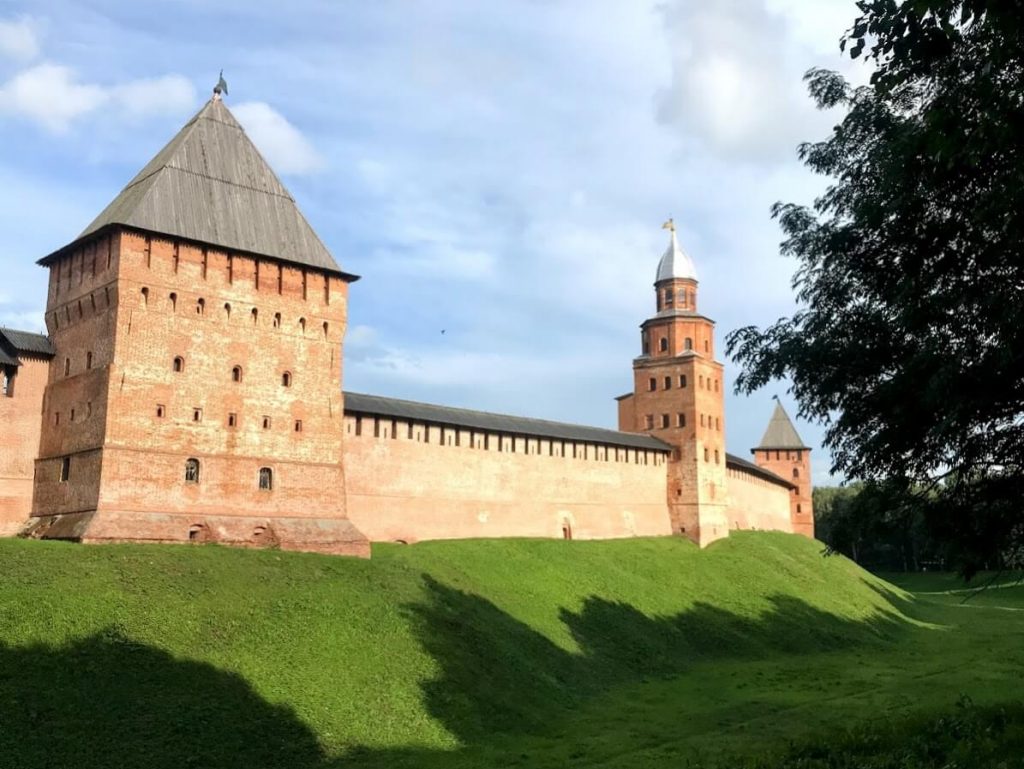
Just like in the case with other ancient Russian cities, the political, religious and cultural centre of Veliky Novgorod was Kremlin. Novgorodians actually call their inner citadel Detinets. During its heyday between 12th and 15th century, Detinets was the centre of the Novgorod Republic. The archbishop’s courtyard was also located there.
In the beginning, the Kremlin of Novgorod, just like the entire city, was made of wood. Still, in the 11th century St. Sophia, the main city cathedral, was constructed in stone. Shortly after that, the Kremlin walls were rebuilt in stone with mighty towers (as much as 6,5 metres thick in some places). Initially, there were twelve towers, of which nine have survived to our day. Each one had access to the fortress wall’s battle course, while the ammunition was stored in the lower tiers.
The Detinets of Novgorod is the first Russian fortress built from red bricks. Following it, other similar forts with typical spikes in the form of a swallow’s tail were constructed across Russia, such as the Moscow Kremlin.
St. Sophia Cathedral
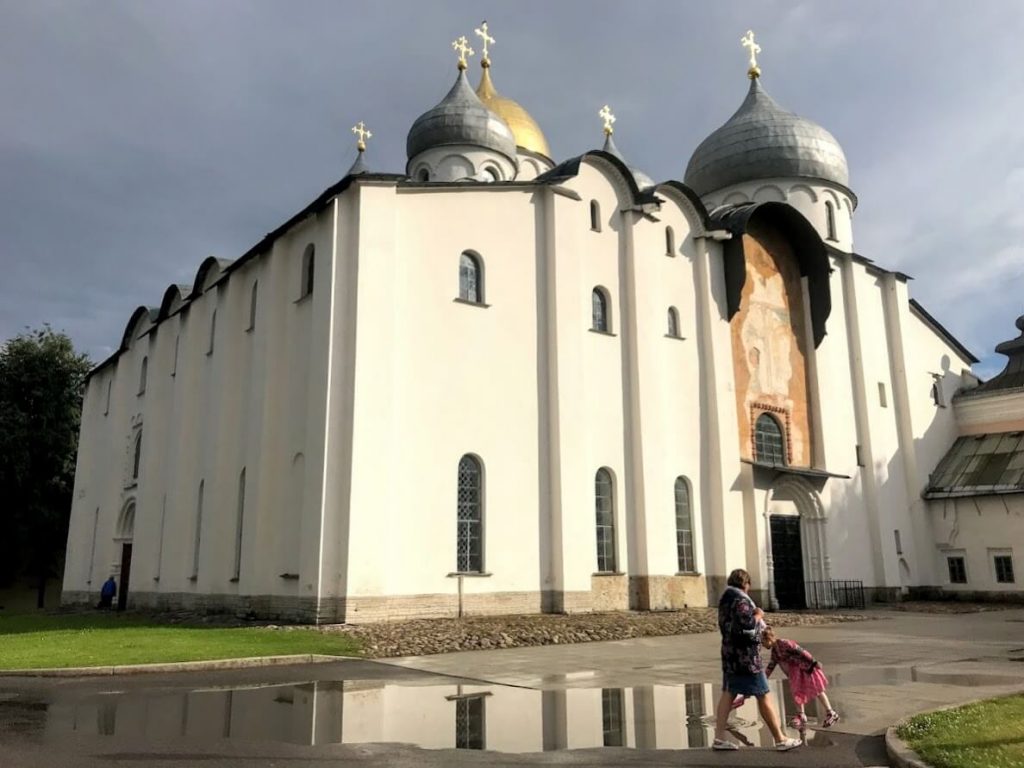
The city’s religious life has always been linked to the Cathedral of St. Sophia – the oldest church in Russia. The majestic cathedral was constructed on the site of the burned down wooden church in only five years (between 1046-1050). Consecrated in Saint Sophia’s name, it was modelled after the Hagia Sophia of Constantinople, the main Orthodox shrine.
St. Sophia of Novgorod has five main domes, and it seems to stretch out to Heaven. It became an example for all Novgorod churches. It was painted white in the mid-12th century, but some of its surviving frescos date back to the 11th and 12th century. The cathedral’s main icon is the miraculous Our Lady of Sign, created in the 12th century. Unfortunately, most of the old frescos were destroyed during the Second World War.

As with many cathedrals around the world, this one also has an interesting legend link to it. Every local in Novgorod knows the legend about the dove on top of the central dome of St. Sophia!
In the Orthodox tradition, the dove is the symbol of the Holy Spirit. As the legend says, in 1570, when tsar Ivan the Terrible ordered to slaughter thousands of the Novgorodians, a dove set upon the cross of St. Sophia. When it saw the massacre, it turned into stone, and the monk of the cathedral saw the Holy Virgin. The latter told him that this dove was sent to the city as a consolation and until it sits there, Novgorod will be protected by the Lord.
The cross with the dove stayed there until 1942 when it fell down after the shelling. It was taken out of the city together with other cultural values by the Spanish Blue Division, who fought on the side of the Nazis. Only in 2002 it was found in Madrid and returned to Veliky Novgorod. The cross that you see on the dome now is the post-war copy, the original cross is inside the cathedral. But locals still believe in the old legend and know that until the dove is in St. Sophia, the city is safe!
⤷ Read more : Places linked to Leo Tolstoy in Moscow
Church of the Transfiguration

Many old Veliky Novgorod churches are situated just across the pedestrian bridge from the Detinets, in the city neighbourhood called Yaroslav’s Court.
However, one church that should be mentioned separately, is a bit further away from Yaroslav’s Court – a small one-dome Church of the Transfiguration. It was built in the 14th century, and is situated on Ilyina Street. It mesmerises with its original decorations and the harmony of proportions, typical of all Novgorod churches.
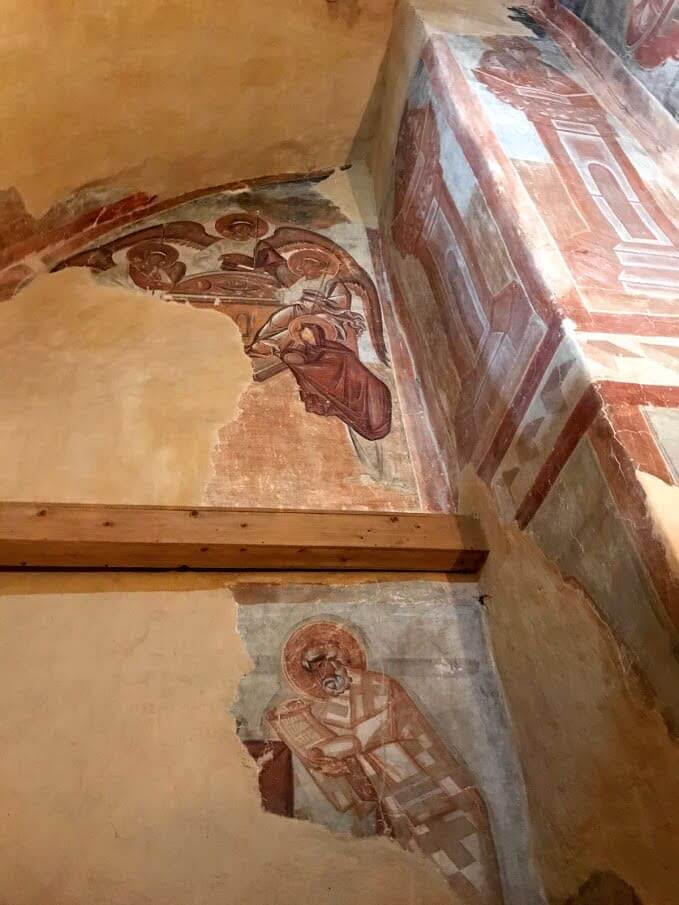
It gained its worldwide fame thanks to the frescoes made by Theophanes the Greek, an outstanding icon painter. This Byzantine artist came to Russia as an already established master. His frescos in the Novgorod church became his first work in Russia and the only surviving example of his monumental painting in the world.
As most other frescos of that epoch, they are only partially preserved, but even these fragments allow us to fully appreciate an outstanding talent of their author, his expressive, laconic, and at the same time, free manner of painting.
⤷ TIP : At times of heavy rains and snowfalls, the church may be closed.
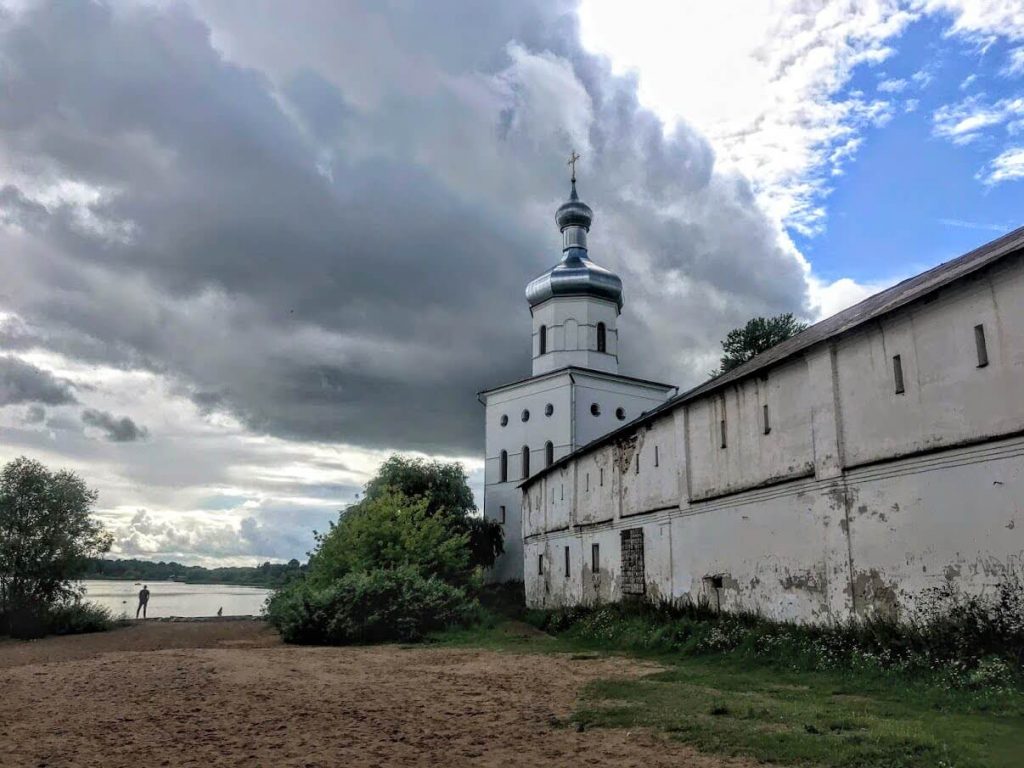
If you spend two days in Veliky Novgorod, you’ll have more time to explore other ancient churches. In that case, be sure to visit the legendary St. George (Yuriev) Monastery and the Museum of Wooden Architecture Vitoslavitsy, take a boat ride or visit the History Museum in Novgorod Kremlin with old icons, birch bark manuscripts and other medieval objects.
⤷ Read more : Explore Saint Petersburg in the footsteps of Fyodor Dostoevsky
What to see in Pskov in a day
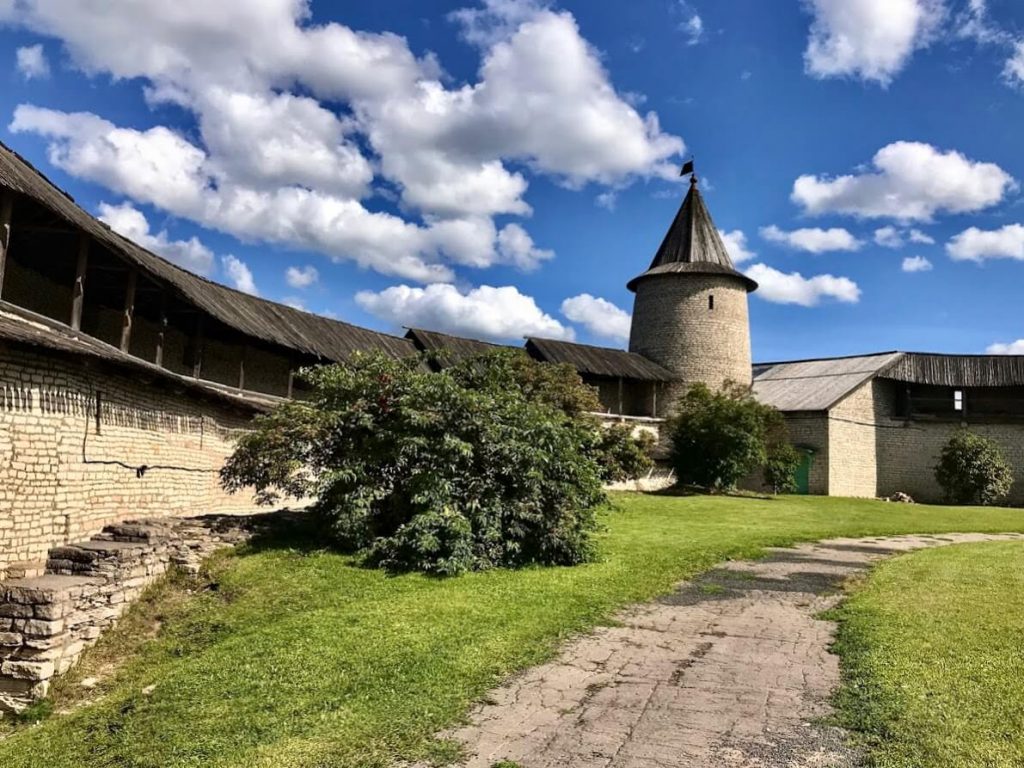
Pskov is quite remarkable because it was the city of the holy Princess Olga. She was the first woman on the Russian throne and the first princess mentioned by the chroniclers. No woman before her received such an honour.
Russia was later on ruled by many women. But, probably, the reign of courageous Olga in Pskov became the prologue to the 18th century – the century of women on the Russian throne, where particularly empresses Elizabeth and Catherine II stand out.
Olga, who came to power after the death of her husband Prince Igor, became the first Christian ruler of Rus – thirty years before Russian principalities adopted Christianity officially in 988 in Kyiv. Olga was baptised in Constantinople, while her family and other people in Russia kept practising paganism.
The social system of Pskov was distinguished by the greater role of merchants. This city of traders had been the mixture of various cultures, thanks to its position on the border with other countries.
Therefore, Pskov has always protected Russia’s western borders – this role strengthened the position of its army and urban lower classes. Simultaneously, life in the city was distinguished by even greater democracy than in Veliky Novgorod.
Kremlin – Krom
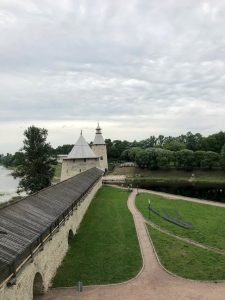
Just as you see thick unapproachable walls of the Pskov Kremlin, Krom, standing at the intersection of rivers Pskova and Velikaya, you will feel that the spirit of Pskov is somehow harsher than that of Novgorod.
⤷ TIP : Veliky or Velikaya is the word for ‘Great’ in Russian. Thus, the city of Novgorod is called Novgorod the Great. And the name of the river that flows through Pskov can be translated as the Great River.
These were not the only fortification walls of Pskov – the medieval city was surrounded by five rings of defensive walls! When strolling around Pskov, you will often find their fragments here and there. Like ancient guards, they remind us of the heroic past of Pskov and the numerous attacks it was exposed to.
With such a defensive system, the city was inaccessible. By the 16th century, it was surrounded by 37 towers, while the total length of the fortress walls reached ten kilometres. Even when the enemy managed to get through the first fortification ring, it could not reach Krom.
Trinity Cathedral

In the centre of Krom, you will see a gigantic Trinity Cathedral. It was the main construction of the old city, that still dominates it with its 78 meters height and the stern look. Today’s cathedral is the forth, it stands on the place where in the 10th century the first wooden church was built by Princess Olga’s request.
Trinity Cathedral possesses unique seven-tier wooden iconostasis built in the 17th century. Centuries ago, at the square in front of the cathedral, the rulers of Pskov were elected.
⤷ Read more : Art Nouveau in Saint Petersburg
Mirozhsky Monastery
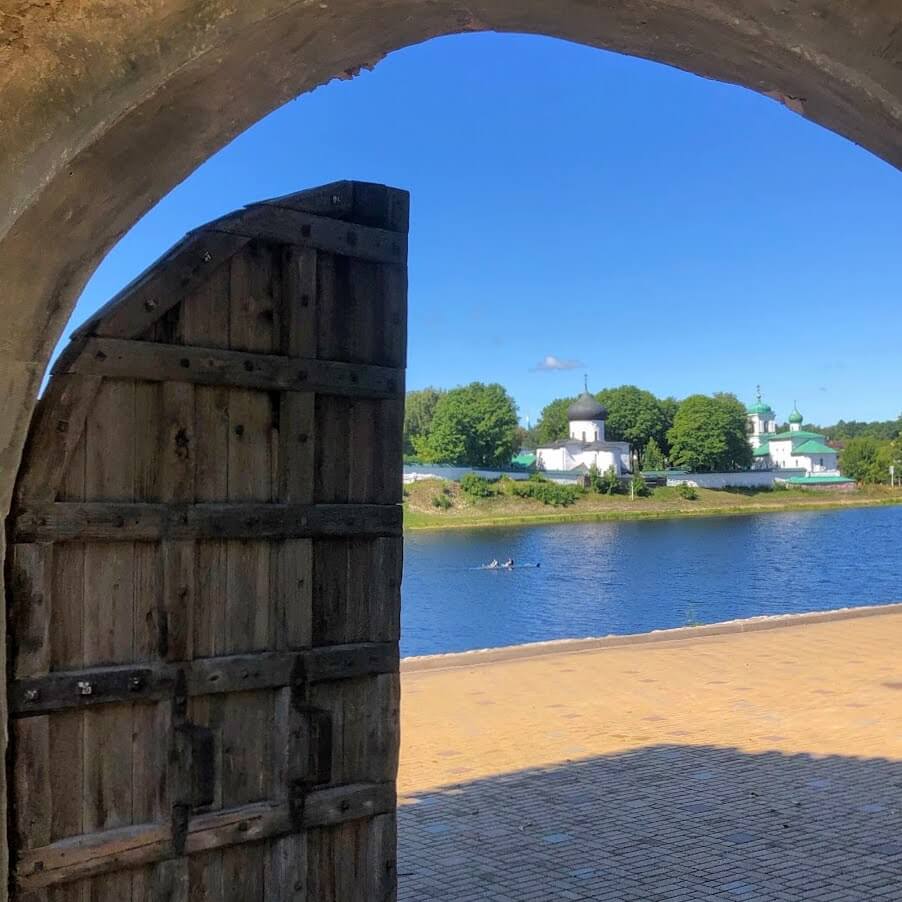
This 12th monastery is situated on the opposite side of Velikaya River, just across the Krom. It is one of the oldest monasteries in Russia. However, it is unique not only because of that – it preserved 80% of magnificent pre-Mongol frescos in its main church! The names of fresco artists are unknown, but we know they came from Greece.

Thanks to the Mirozhsky frescoes, the local school of icon painting began to develop in Pskov. The first Pskov icons were created there. Today, they are almost intact, because, like many other medieval paintings, they were whitewashed during the 17th century. And they were just rediscovered at the end of the 19th century.
⤷ TIP : Pre-Mongol monuments are those works of art created in the Russian principalities before the Tatar-Mongol invasion of 1237- 1480. These works are closely linked to the Byzantine tradition. The largest number of them can now be found in Veliky Novgorod and its surroundings, Pskov and Staraya Ladoga.
Today there are more than 50 old churches in Pskov, but most of them date back to 14th and 15th centuries – Pskov Republic’s heyday.
Palaty – Old Civil Buildings of Pskov
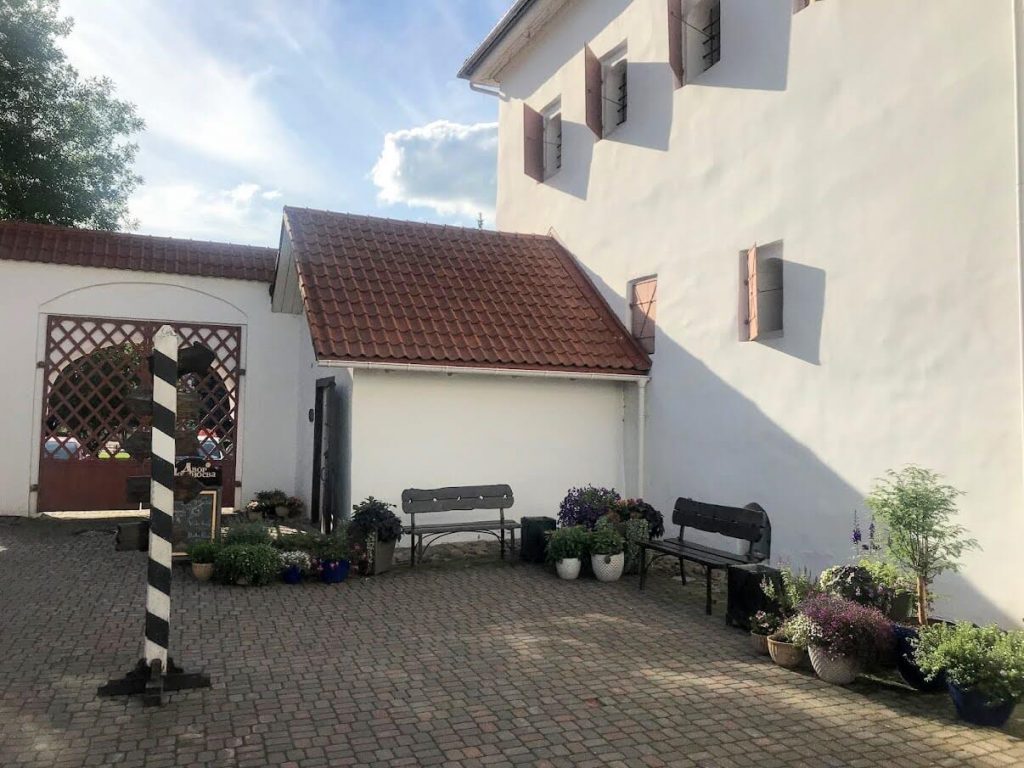
Pskov is home to several old stone houses of locals. They are called palaty in Russian. That word is used for all stone civil buildings in Russian cities that date back to the epoch before Peter the Great’s reign. Most of them were constructed between the 15th and 17th century.
The palaty in Pskov are huge in comparison to those preserved in Moscow and other old Russian cities. The most distinguished ones are the Palaty of Menshikov and Pogankin. They have massive fortified walls and small windows – loopholes, which again demonstrates the fierce spirit of Pskov and its inhabitants.
Today, Pogankiny Palaty is a museum with wonderful Pskov icons created between 14th and 17th century, table silver and medieval archaeological findings. Menshikovy Palaty house a souvenir shop with trademark pottery of local masters.
Pskov, just like Veliky Novgorod, is rich in treasures that archaeologists still keep finding in the foundations of wealthy medieval houses. Among the latest discoveries are the treasures found in 2004 during the construction of the Courtyard of Podznoev Hotel. There, the burial place of a noblewoman who lived about a thousand years ago was situated.
She was coined the Varyagian Guest, and it seems that she could have been in the inner circle of legendary Princess Olga. If you stay in that hotel, you can see the copies of these findings. The originals are now in the collection of Pogankiny Palaty.
The hotel is also united with Podznoev Palaty – reconstructed old palaty of local merchant Podznoev, that’s nowadays home to several restaurants.
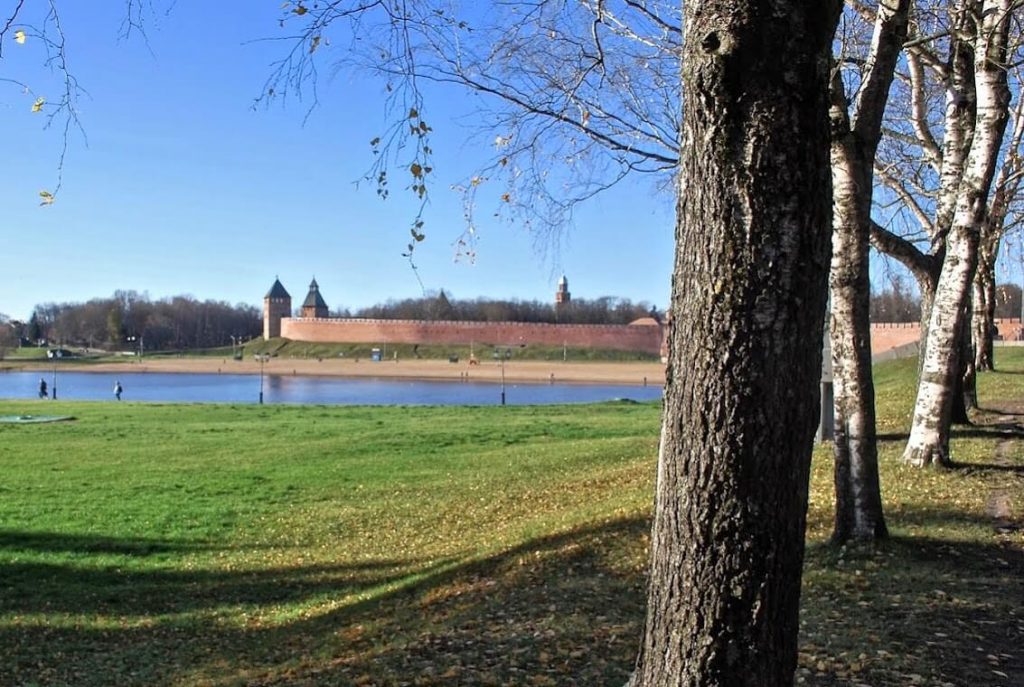
In this post, we shared with you just some of the beautiful sights you can see in Veliky Novgorod and Pskov. We hope, this article will encourage you to visit these two cities, the cradles of the Russian culture, appreciate their stern northern beauty and domes of their numerous ancient churches with your own eyes!
⤷ TIP : If you’d like to visit Veliky Novgorod and Pskov, be sure to contact Alexandra and Karina to get more detailed recommendations for your trip or to request a tour!
Pskov , Russia , Veliky Novgorod
Top Things to Do in Veliky Novgorod, Russia - Veliky Novgorod Must-See Attractions
Things to do in veliky novgorod, explore popular experiences, top attractions in veliky novgorod.

Other Top Attractions around Veliky Novgorod

What travellers are saying
- Novgorod Kremlin (Detinets)
- St. Sophia Cathedral
- Millennium of Russia
- St. George Monastery
- Granovitaya Palata
- Kremlin Park
- Kremlevskiy Beach
- Children Entertainment Center LES
- Yuryevskiy Beach
- Wildlife Park
- Center of Musical Antiquities
- Novgorod State Integrated Museum Reserve

IMAGES
VIDEO
COMMENTS
Things to Do in Veliky Novgorod, Russia: See Tripadvisor's 24,573 traveler reviews and photos of Veliky Novgorod tourist attractions. Find what to do today, this weekend, or in April. We have reviews of the best places to see in Veliky Novgorod. Visit top-rated & must-see attractions.
Church of St Simeon. Veliky Novgorod. This tiny church in the former Zverin Monastery grounds has colourful frescoes that form a religious calendar. Discover the best attractions in Veliky Novgorod including Novgorod State United Museum, Cathedral of St Sophia, and Veliky Novgorod Kremlin.
In Veliky Novgorod there is a sculpture called 'Novgorod region in the 12-15th centuries'. It looks like a map with the ancient Novgorod borders and key events from its history. But this map is not just a tourist attraction that you can take a picture with. There are QR-codes on the information board near the sculpture.
Go to Church (es) A. Savin/Wikimedia Commons/ CC BY-SA 3.0. Like most historical Russian cities, Novgorod is positively brimming with churches. Though you will probably succumb to "cathedral fatigue" long before seeing all of them, a few of Novgorod's houses of worship are among the top things to do in the city.
Things to do in Veliky Novgorod. Embrace the City's History in the Kremlin | Veliky Novgorod is a city known for its medieval monuments, many of which can be found within the fortified walls of the Kremlin. This is the oldest and northernmost Kremlin in Russia with a key highlight being St. Sophia's Cathedral, the oldest church in Russia.The Kremlin is also where you'll find the ...
Tourist attractions in Veliky Novgorod From ancient times, Novgorod, located two kilometers from the place where the Volkhov river flows from Lake Ilmen , has been divided into two parts or sides: Sofyisky (by name of the Cathedral of St. Sophia) on the left bank and Torgovaya (Trade) on the right bank of the river Volkhov.
Top Things to Do in Veliky Novgorod, Novgorod Oblast: See Tripadvisor's 24,273 traveller reviews and photos of 266 things to do when in Veliky Novgorod.
Veliky Novgorod Tourism: Tripadvisor has 23,794 reviews of Veliky Novgorod Hotels, Attractions, and Restaurants making it your best Veliky Novgorod resource.
Set amid peaceful marsh and lakelands a 15-minute bus ride south of the Veliky Novgorod town centre, the picturesque St George's Monastery makes for a relaxing excursion. Founded in 1030 by Yaroslav the Wise, the monastery functions as a theological school.
St. Sophia Cathedral. 550. Architectural Buildings. One of the oldest stone buildings in Russia, this magnificent cathedral is considered to be the symbol of the city, and was once the hiding place for Novgorod's treasury. See full details. 3. Millennium of Russia. 828.
Veliky Novgorod. Vitoslavlitsy is an evocative open-air museum of 22 beautiful wooden peasant houses and churches, some dating back to the 16th century, and the highlight being the soaring Church of the Nativity of Our Lady (1531). What makes these buildings all the more remarkable is that they were all constructed without nails.
2. Admire the heart of the city: Veliky Novgorod's kremlin. Believe it or not, but the kremlin is the heart of many ancient Russian cities, not only Moscow. Located on the bank of the Volkhov ...
Day 3: East side of town. For day 3, we recommend exploring the east side side of town. Start the day off with Park Inn by Radisson Veliky Novgorod, then wind down and take it easy by the time you get to Znamensky Cathedral. All together, your day would be filled with about 6 hours of non-stop fun.
Introduction. Veliky Novgorod is a beautiful city of about 230,000 inhabitants, located about 180 kilometers south of St. Petersburg, known as "The Birthplace of Russia" or "The Oldest City of Russia", as it was in this city, in 862, where Prince Rurik proclaimed the modern Russian state.. Until the year 1478, the city was called Gospodin Veliky Novgorod ('Lord Novgorod the Great ...
Veliky Novgorod - Overview. Veliky Novgorod or Novgorod the Great (just Novgorod until 1999) is a city in the north-west of Russia, the administrative center of Novgorod Oblast. It is one of the oldest and most famous cities in Russia with more than a thousand years of history. The population of Veliky Novgorod is about 224,800 (2022), the area - 90 sq. km.
Veliky Novgorod Kremlin. On the west bank of the Volkhov River, and surrounded by a pleasant wooded park, the kremlin is one of Russia's oldest. Originally called the Detinets (and still often referred to as such), the fortification dates to the 9th century, and was rebuilt with brick in the 14th century; this still stands today. The complex ...
⤷ Veliky Novgorod is located some 180 km from Saint Petersburg. It can be reached by train, bus or car via the new highway. ... Tea Gudek Šnajdar is an art historian, blogger and editor at Culture Tourist. She is writing about the art and culture of European destinations. Related Posts. Art Nouveau walk around Nevsky Prospect in Saint ...
Our activity is aimed at creating a single information resource in the field of tourism, providing accessible and complete information about the tourist opportunities of the Novgorod region. We acquaint the reader with more than 20 thousand attractions, which include objects of historical and cultural heritage, natural monuments and protected ...
2. St. Sophia Cathedral. 550. Architectural Buildings. One of the oldest stone buildings in Russia, this magnificent cathedral is considered to be the symbol of the city, and was once the hiding place for Novgorod's treasury. See full details. 3. Millennium of Russia.
Prices for visiting the Bell Tower of St. Sophia Cathedral and the rampart for an adult: 300 rubles. The Bell Tower and the rampart are open from 10.00 to 14.00 and from 15.00 to 18.00 (Friday to Sunday to 20.00) in spring and winter, from 10.00 to 14.00 and from 15.00 to 18.00 in autumn and winter.